Arlington National Cemetery Burials- Who is Buried in Arlington National Cemetery
Purchases made through links earn us a small commission, at no extra cost to you.
Arlington National Cemetery is one of the most distinguished cemeteries in the United States. As the final resting place for the country’s revered military members, the grounds contain remains of veterans involved in every American conflict from the Revolutionary War to more recent missions in Iraq and Afghanistan.
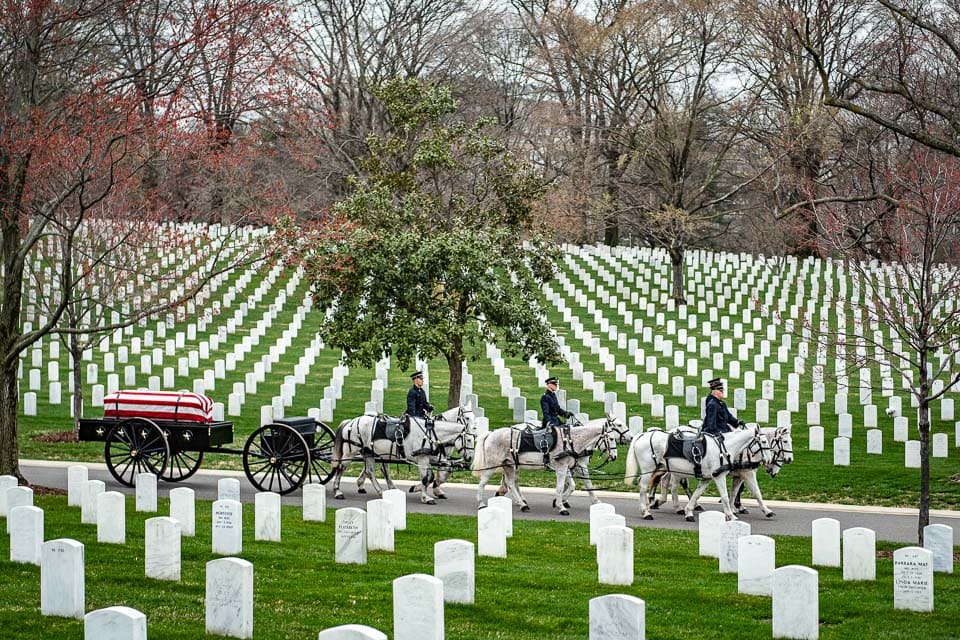
Of the approximately 400,000 people buried at Arlington National Cemetery, all have served and sacrificed for their country. Burials at Arlington National Cemetery include active duty service members, veterans, and their families.
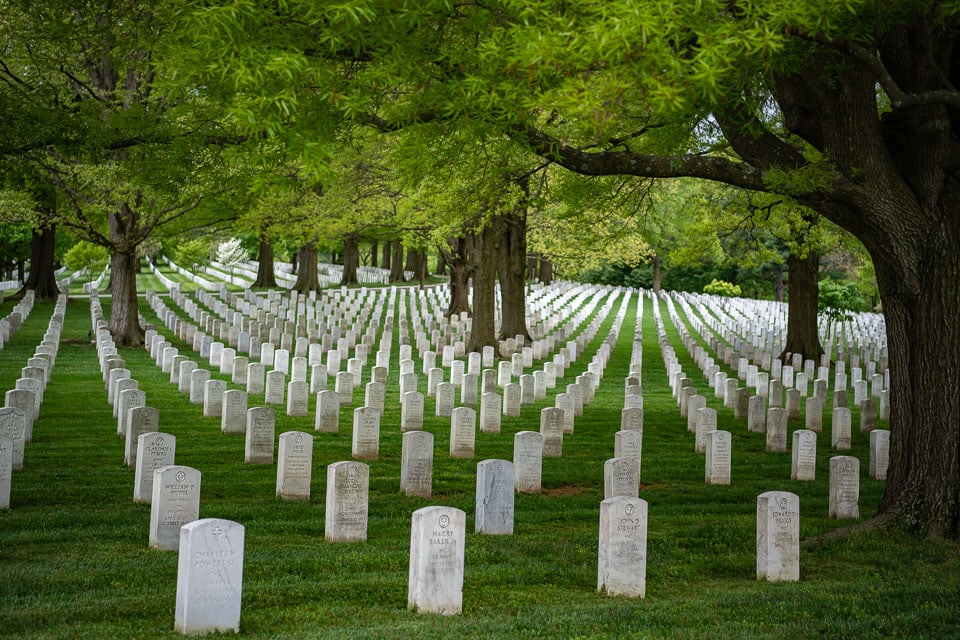
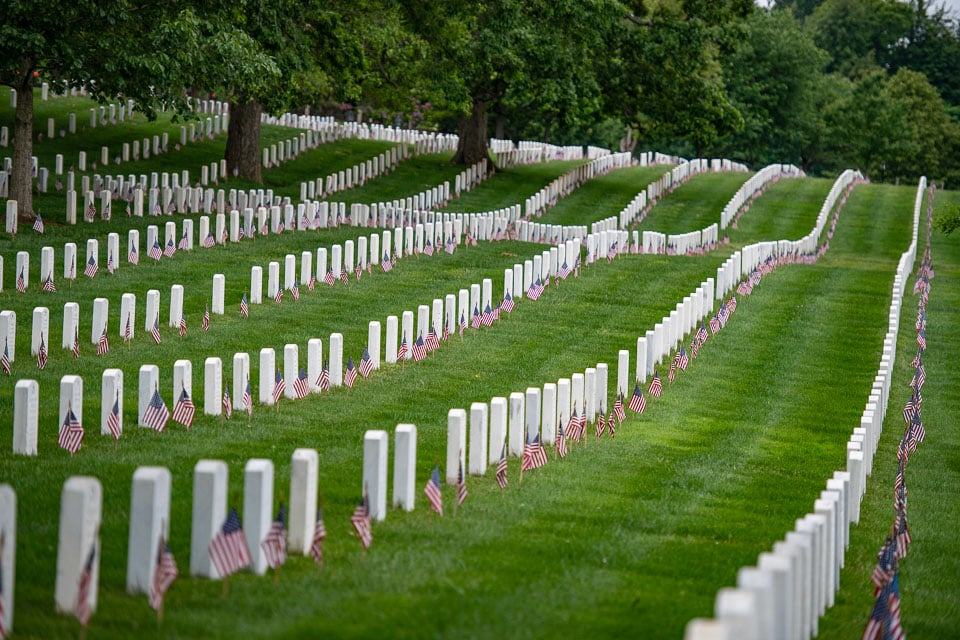
There are many notable people buried in Arlington National Cemetery, but no matter their status, they all had to meet certain requirements to receive a grave here.
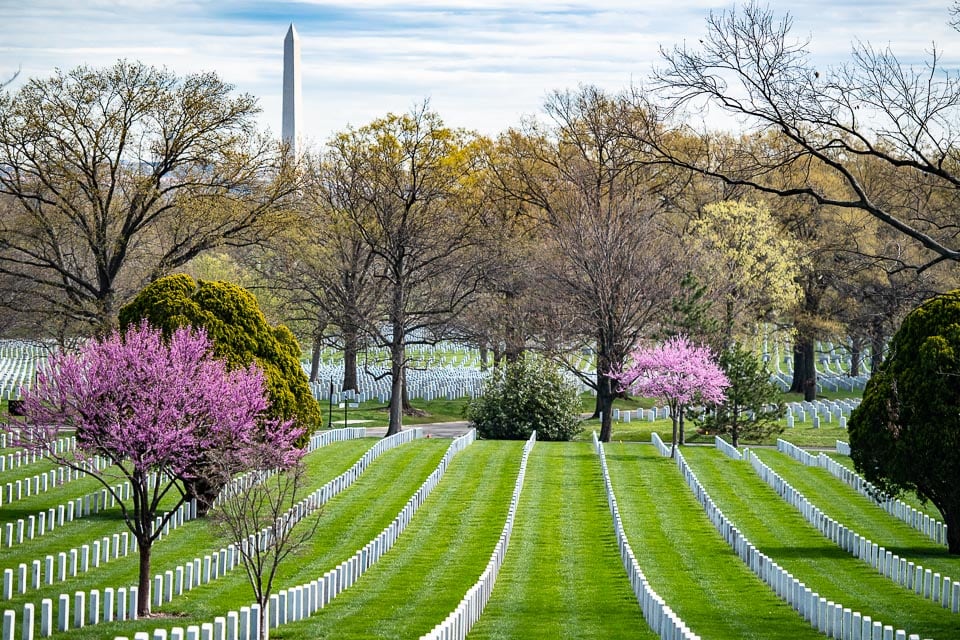
In This Post
Who Can Be Buried in Arlington National Cemetery- Requirements to be Buried in Arlington
There are strict regulations about who can be buried at Arlington National Cemetery and eligibility for in-ground burials at Arlington National Cemetery is the most rigorous of all U.S. national cemeteries. The criteria for inurnment of cremated remains in the columbarium or niche wall are less restrictive.
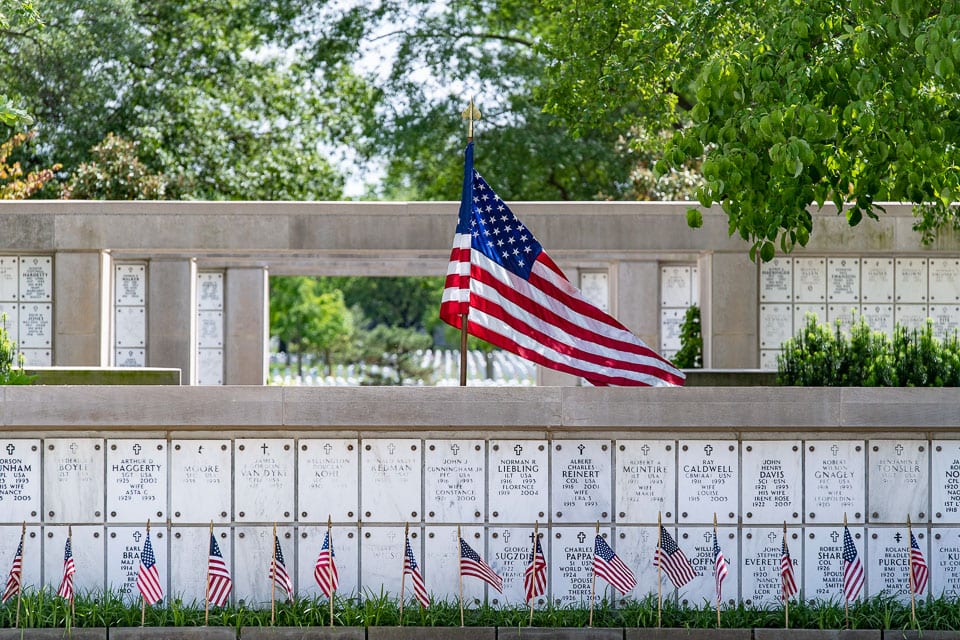
Regardless of whether it’s an in-ground burial or above-ground inurnment, service members must have received an honorable discharge from their last period of active duty.
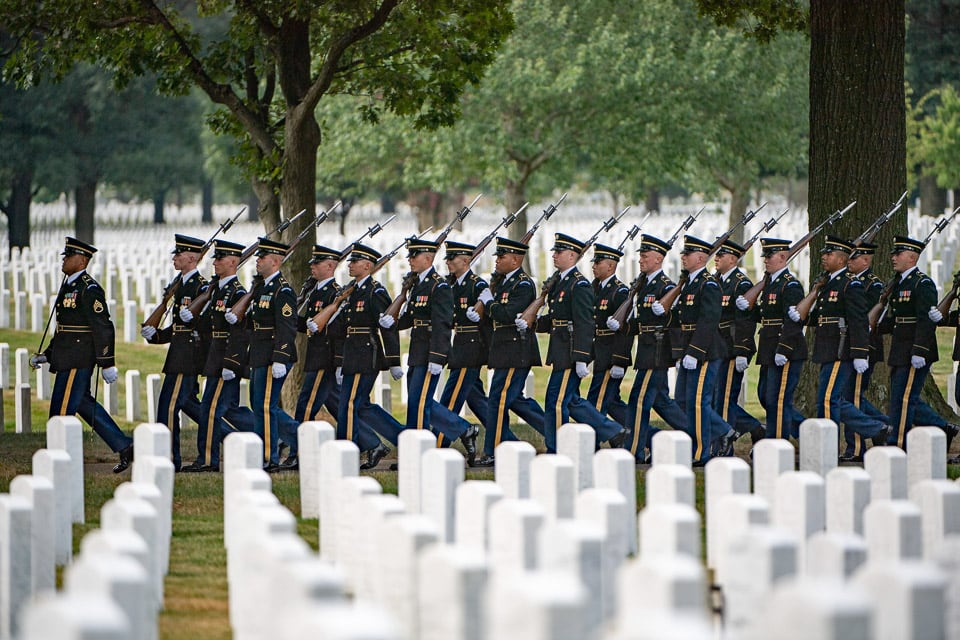
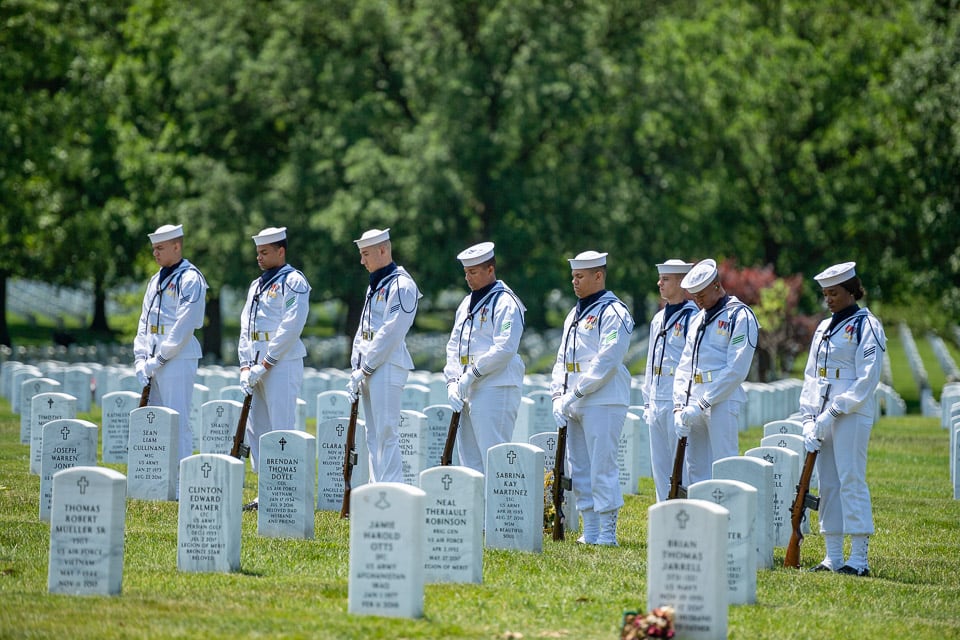
There are a few categories of people who can be buried in Arlington National Cemetery below ground, but the main ones are:
- members of the Armed Forces who die while on active duty (not including training)
- veterans retired from active duty and receiving retirement pay
- veterans who have been awarded a Medal of Honor, Distinguished Service Cross, Distinguished Service Medal, Silver Star, or Purple Heart
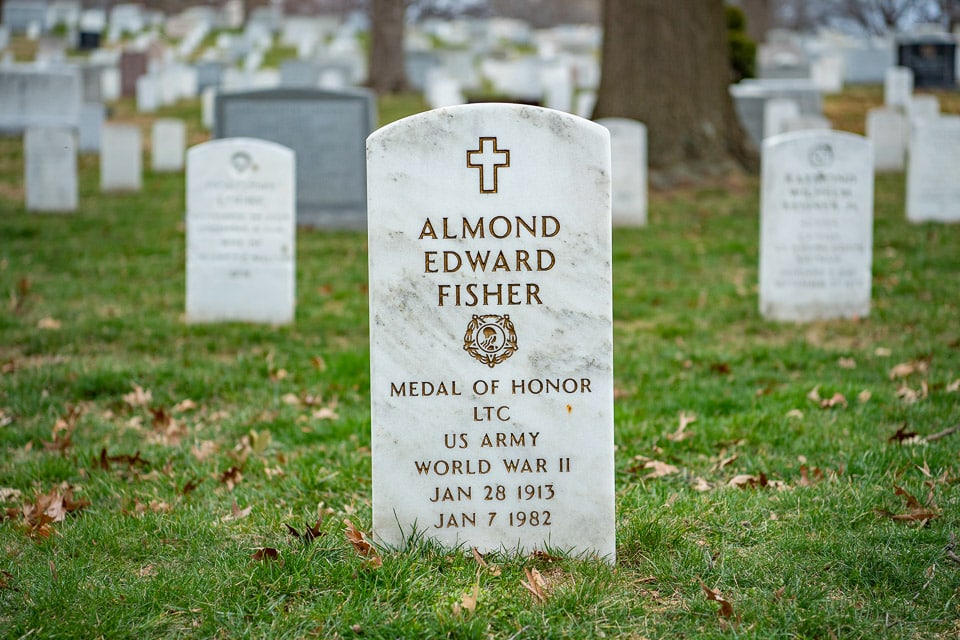
If a service member meets the Arlington National Cemetery burial requirements then their spouse, surviving spouse, minor children, and permanently dependent children may also be buried here.
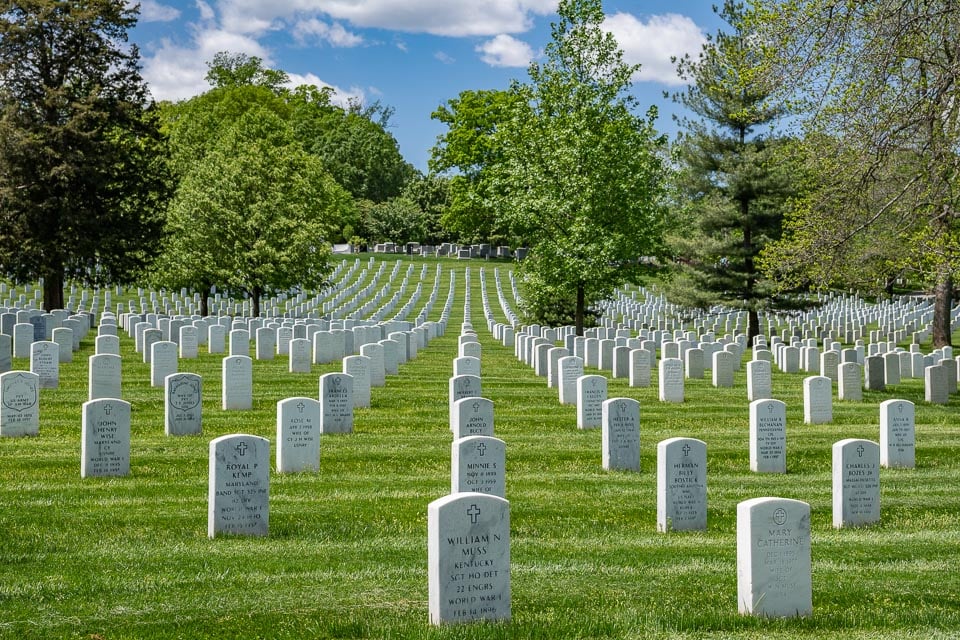
The eligibility criteria for burials at Arlington National Cemetery may be revised because of dwindling space in the cemetery.
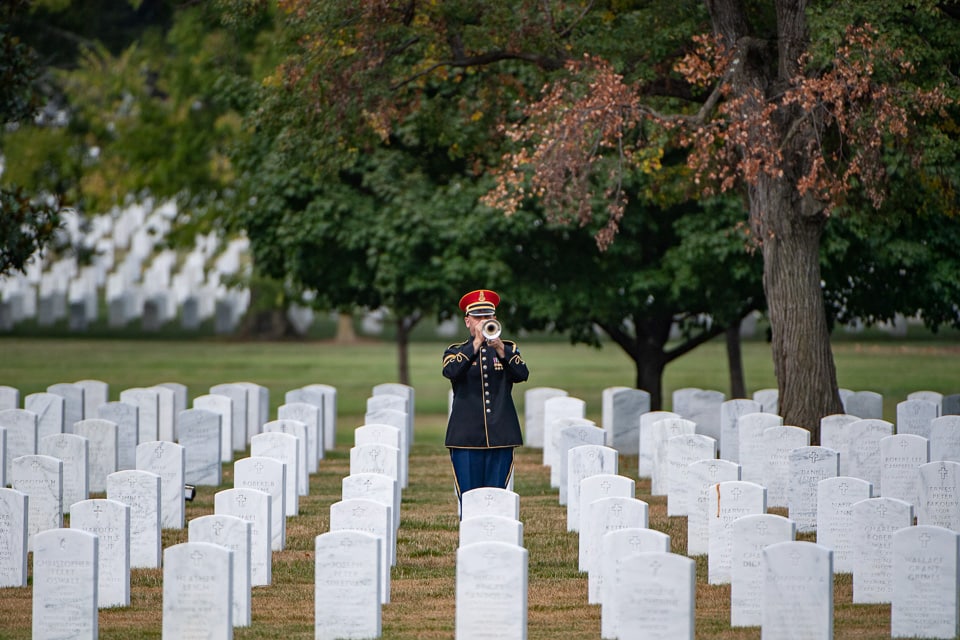
Arlington National Cemetery Burials- Notable Graves in Arlington National Cemetery
There are many distinguished military leaders and famous people buried at Arlington National Cemetery including five-star generals, former presidents, Supreme Court justices, politicians, explorers, athletes, and astronauts.
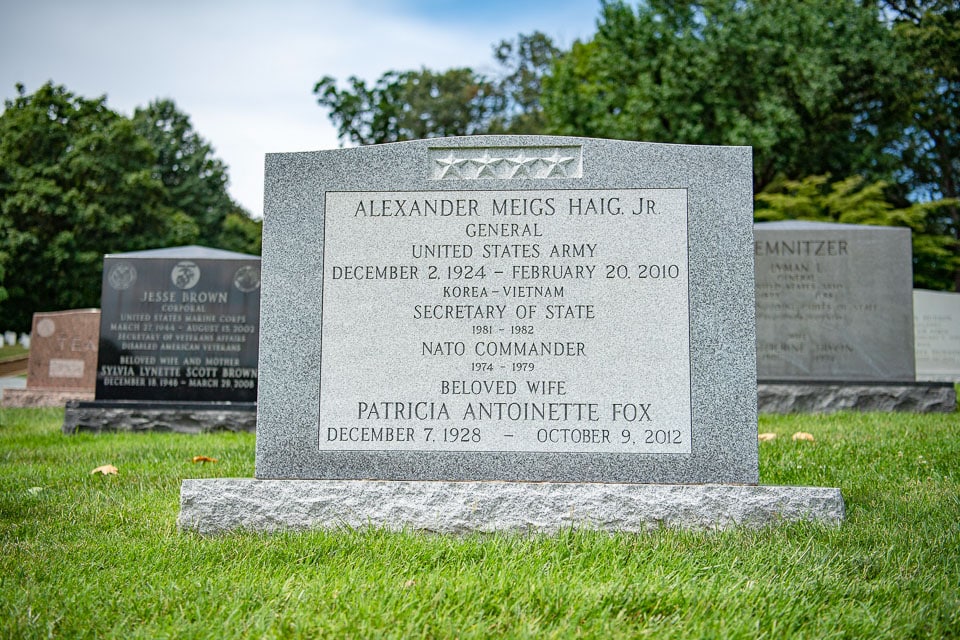
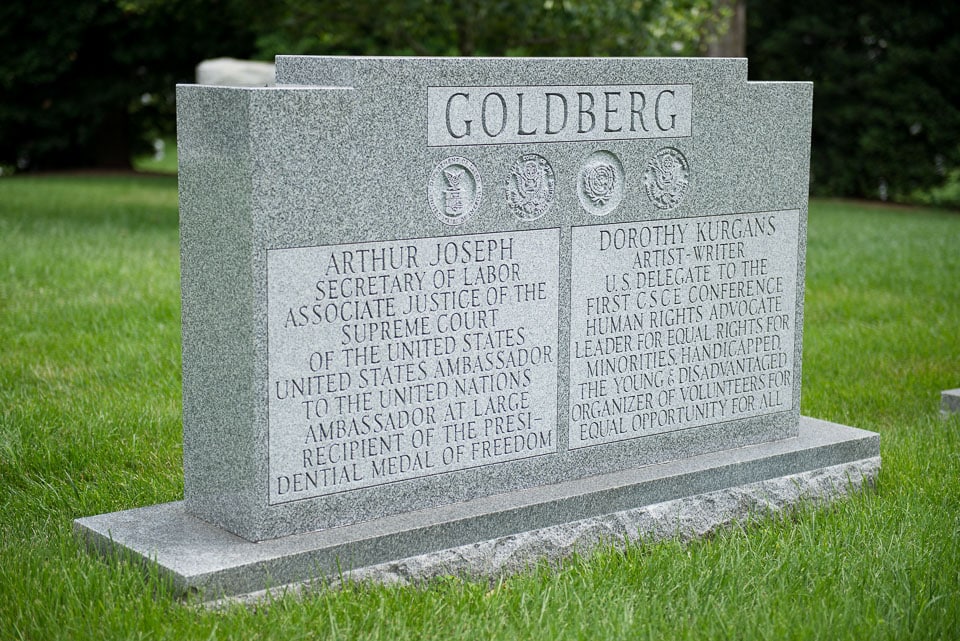
Two of the most prominent graves in Arlington National Cemetery are the Tomb of the Unknown Soldier and the grave of John F. Kennedy, but there are plenty of other important burials at Arlington.
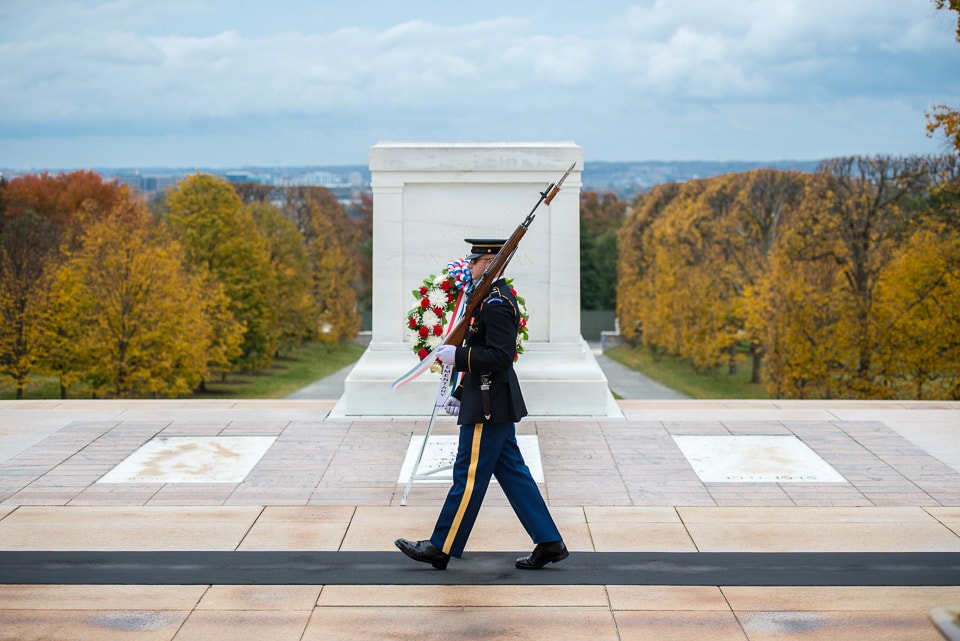
Here are some noteworthy graves in Arlington National Cemetery.
Grave of John F. Kennedy (President)
Section 45
The gravesite of John F. Kennedy, 35th president of the United States, is the most visited of all the graves in Arlington National Cemetery.
Arlington was chosen as the site for JFK’s grave because his widow, First Lady Jacqueline Kennedy, wanted his grave to be easily accessible to the public. President Kennedy’s plot is located on a terrace in Section 45 and his grave faces northeast toward Washington D.C.
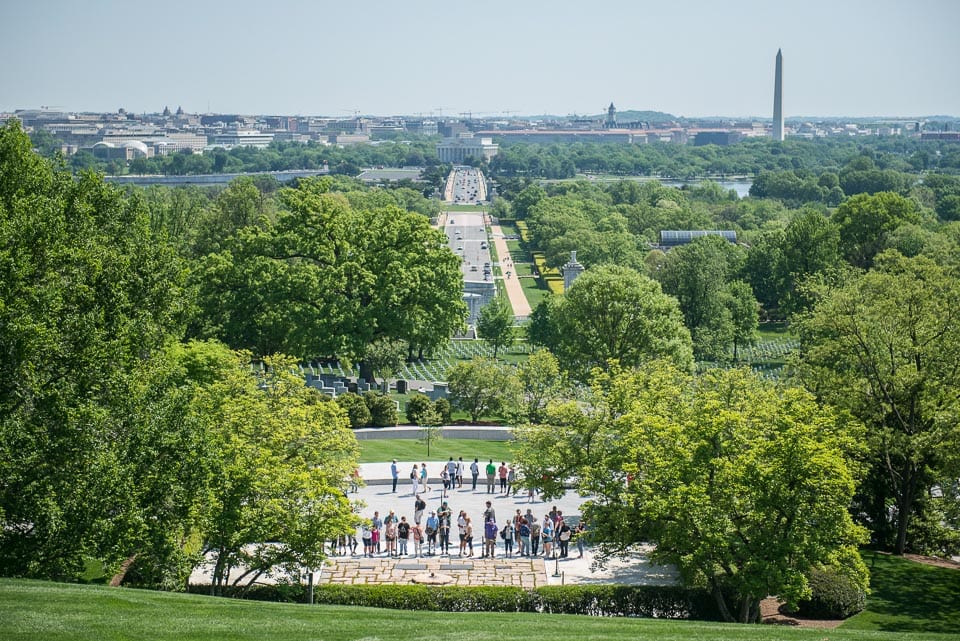
JFK’s grave is marked with a simple black slate tablet set flat in the ground and surrounded by rough-hewn granite fieldstones. The fieldstones were taken from a quarry on Cape Cod, near where Kennedy would spend his summers.
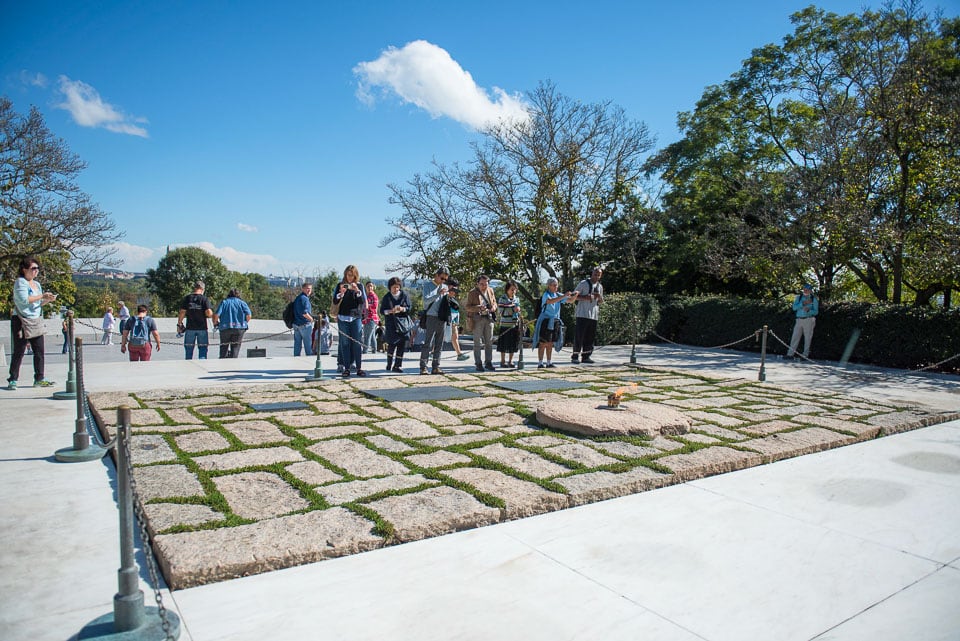
The centerpiece of JFK’s gravesite is an eternal flame framed by a circular fieldstone, also found on Cape Cod. The flame was lit by Mrs. Kennedy.
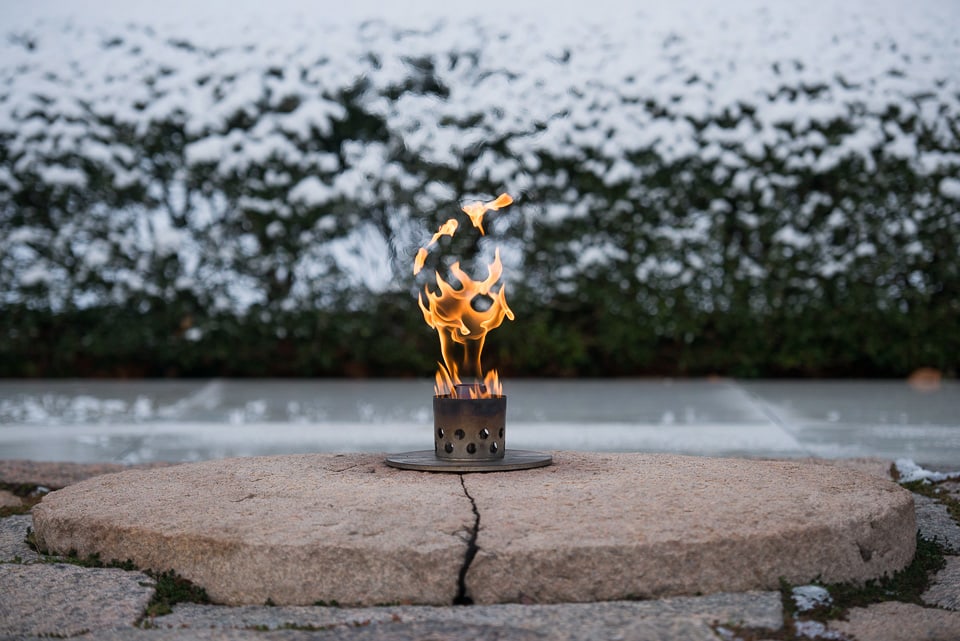
Also buried at JFK’s gravesite are Jaqueline Kennedy Onassis and two of their children- son Patrick who died when he was 2 days old and daughter Arabella who was stillborn.
Grave of William Howard Taft (President)
Section 30, Grave S-14
The first president buried at Arlington National Cemetery was William Howard Taft. He not only was 27th president of the United States, but also served as chief justice of the U.S. Supreme Court.
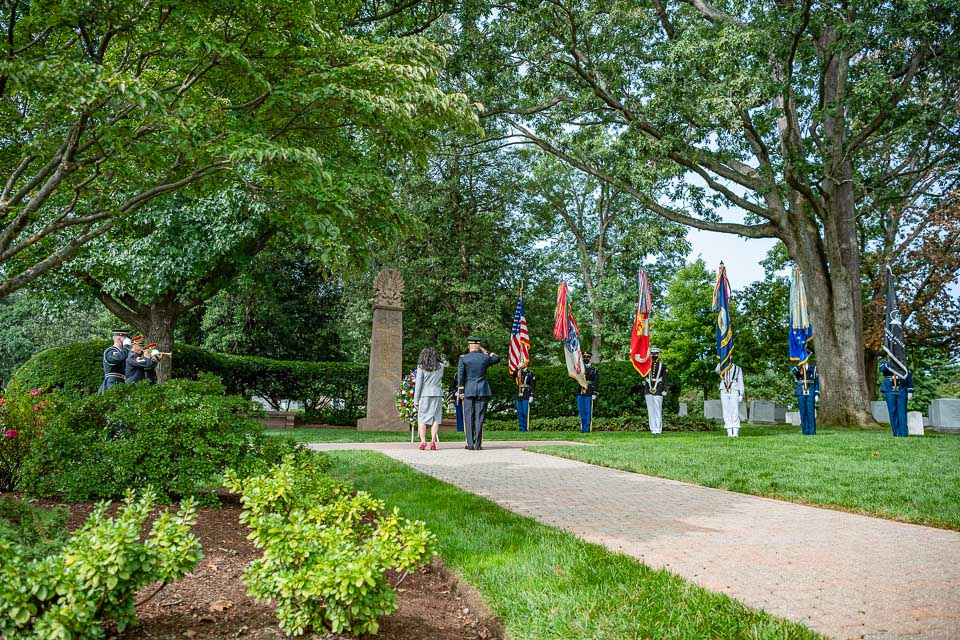
Taft’s grave can be found in Section 30 and is marked by a 14 ft tall mahogany granite headstone. Designed by sculptor James Earle Fraser, the monument features a carved apex and inscriptions in gold leaf.
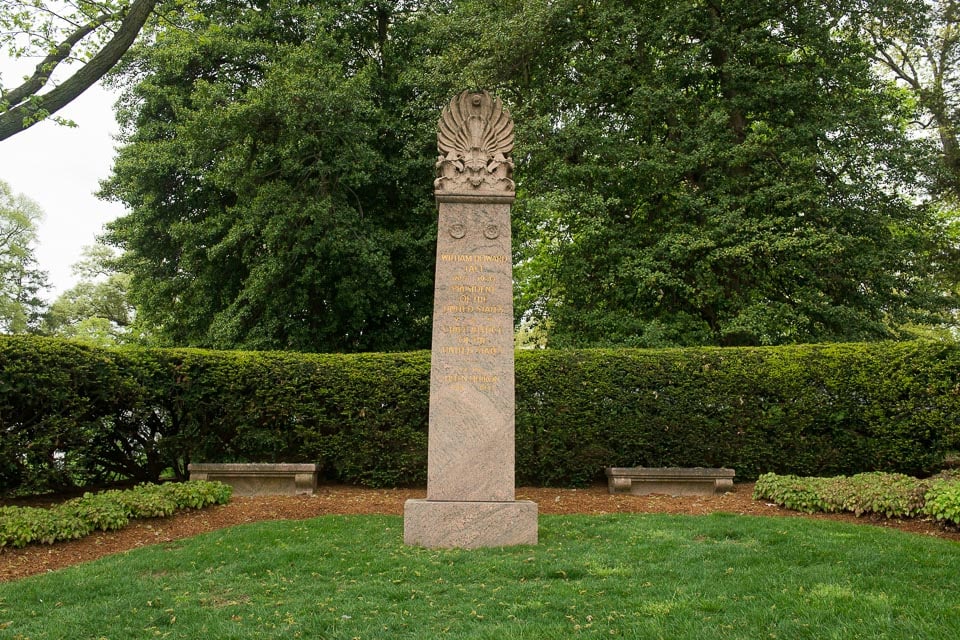
Grave of Ruth Bader Ginsburg (Associate Justice)
Section 5, Grave 7016-1
Among the most famous people buried in Arlington National Cemetery is Ruth Bader Ginsburg. She was the second female justice and first Jewish woman appointed to the United States Supreme Court, where she served from 1993- 2020. Her professional achievements and steadfast support of gender equality and women’s rights led to generations of women viewing her as a feminist icon.
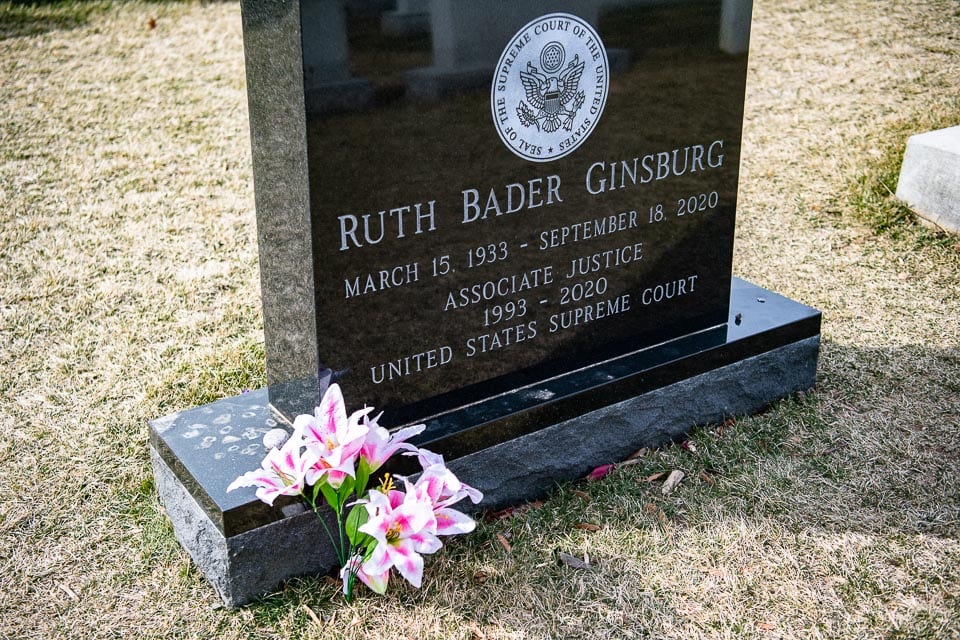
Ruth Bader Ginsburg’s grave is marked with a black tombstone engraved with the Supreme Court seal. Ginsburg shares the tombstone with her husband Martin, a U.S. Army Reserve ROTC officer, who is buried alongside her.
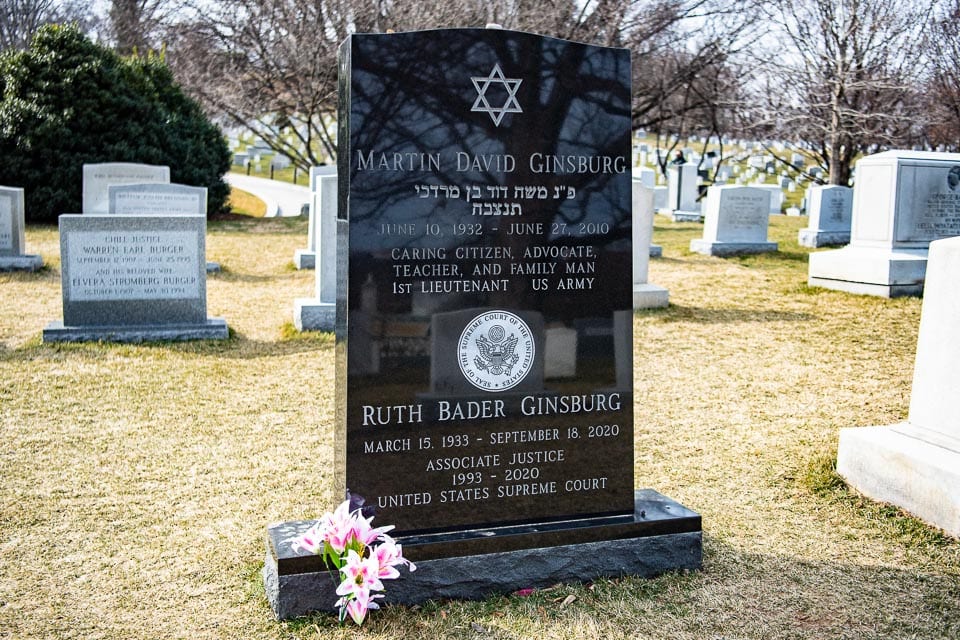
Grave of Thurgood Marshall (Associate Justice)
Section 5, Grave 40-3
Thurgood Marshall made history in 1967 when he became the first African American Supreme Court justice. Marshall was a defender of individual rights and advocated for the civil rights of African Americans, including the end of segregation in public schools.
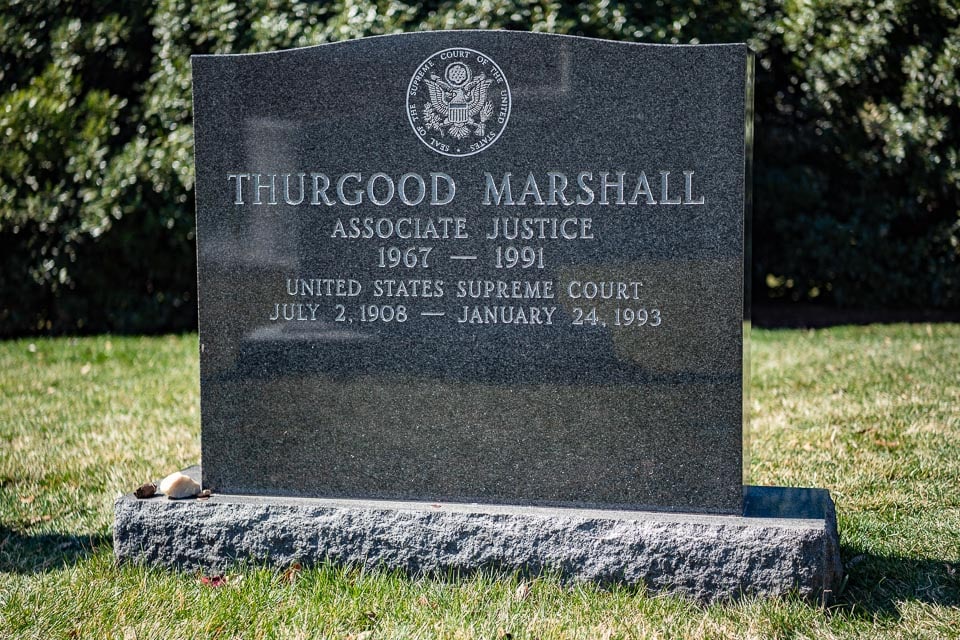
Marshall’s gravestone is engraved with the U.S. Supreme Court Seal.
Grave of Robert F. Kennedy (Senator)
Section 45, Grave S-45-A
Robert F. Kennedy, President Kennedy’s younger brother, served in the U.S. Navy during World War II and later went on to become a senator and Democratic presidential candidate.
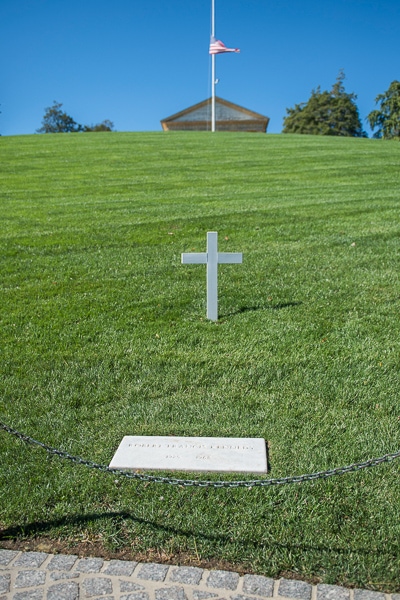
Robert F. Kennedy’s gravesite is next to JFK’s and features a simple white cross and foot stone. Across from his grave is a granite plaza engraved with two quotes from his most notable addresses. Brother Ted Kennedy is buried nearby.
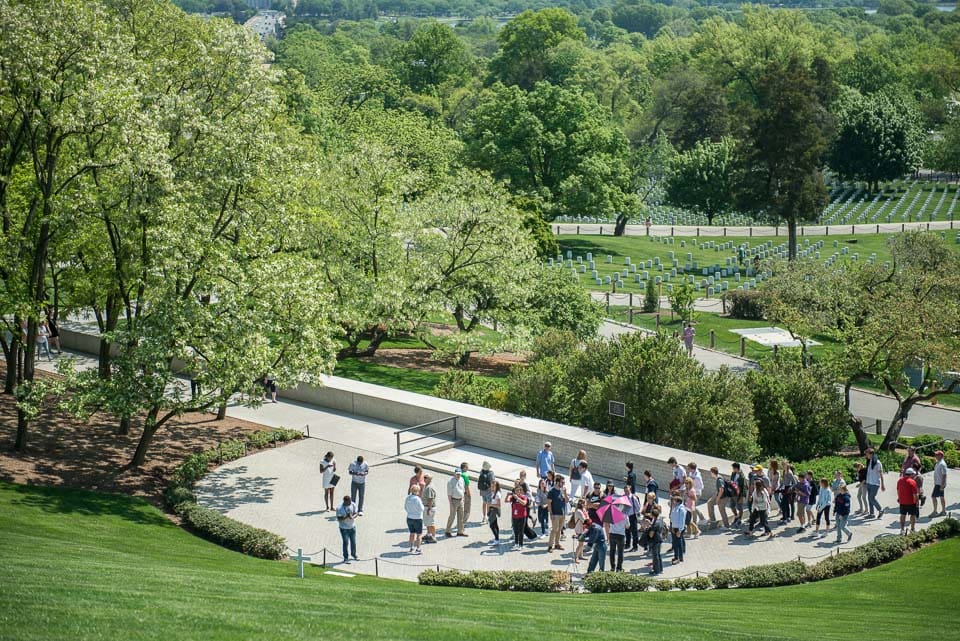
Grave of Robert Todd Lincoln (Captain, Statesman)
Section 31, Grave S-13
Robert Todd Lincoln is the eldest son of President Abraham Lincoln. He was a captain in the Civil War, then later accepted appointments as U.S. Secretary of War and U.S. Ambassador to the United Kingdom.
Robert Lincoln was interred in a pink granite, neoclassical sarcophagus designed by sculptor James Earle Fraser, who worked on several monuments in Washington D.C. The sarcophagus stands in the middle of a small plaza surrounded by trees and hedges.
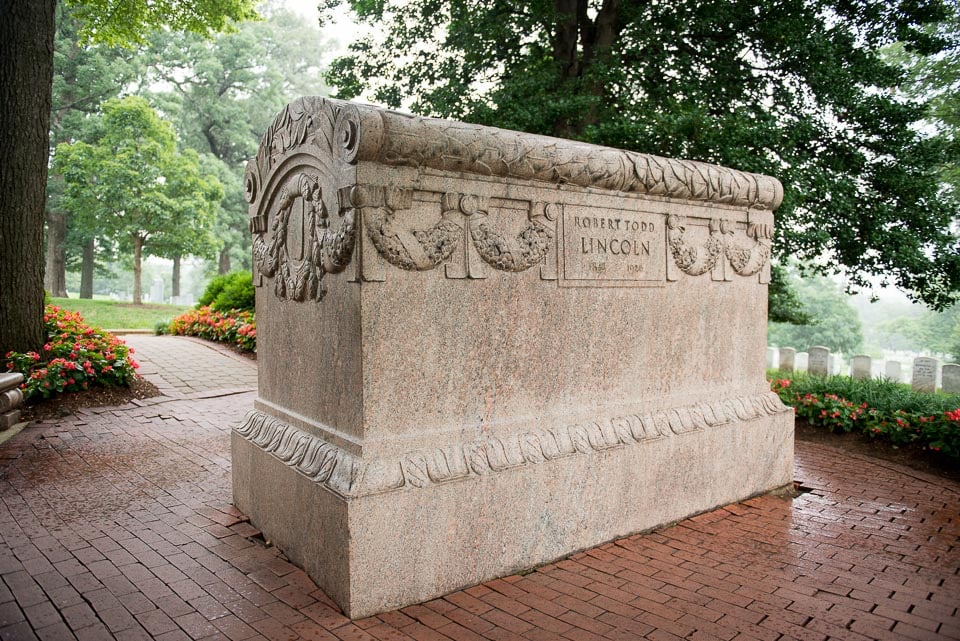
Robert Lincoln is the only immediate family member of Abraham Lincoln buried in Arlington (the rest are interred in the Lincoln Tomb in Oak Ridge Cemetery, Springfield).
Grave of John Wingate Weeks (Lieutenant, Politician)
Section 5, Grave 7064
John Weeks graduated from the United States Naval Academy in 1881 and served in the Navy during the Spanish-American War. After his military service, Weeks became involved in politics serving as a member of the House of Representatives and the Senate. He was appointed to U.S. Secretary of War in 1921, a position he held for 4 years.
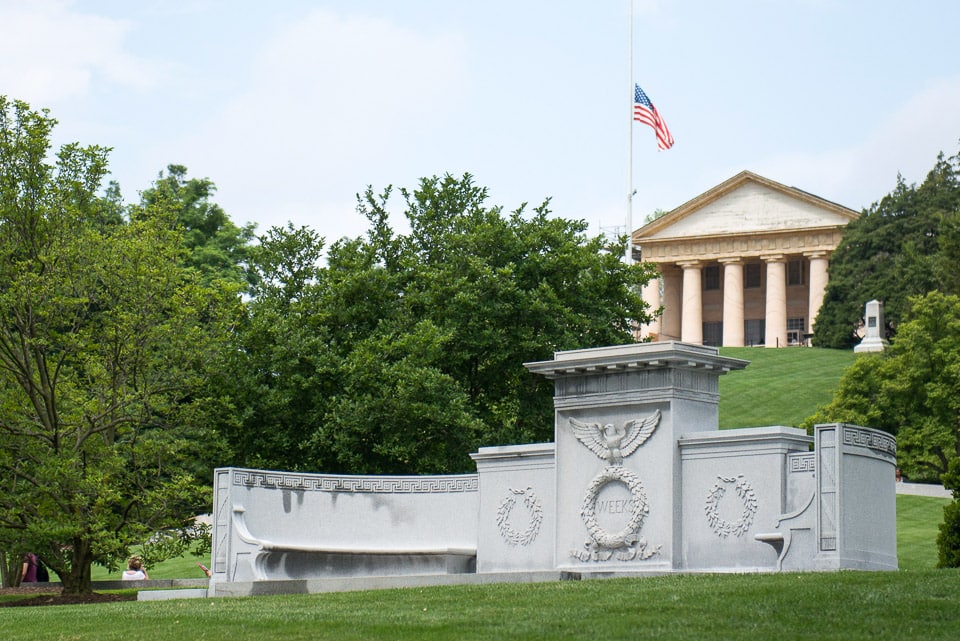
Weeks’ ashes were buried in Arlington National Cemetery and a large stone monument adorned with sculpted wreaths and an eagle was erected at his gravesite.
Grave of George C. Marshall (Five Star General)
Section 7, Grave 8198
George C. Marshall is known for being one of the most distinguished military, political, and diplomatic leaders of the 20th century. He was chief of staff of the U.S. Army during World War II, directing the Army’s largest expansion in history. He later served as secretary of state and secretary of defense under President Truman. Marshall also won the Nobel Peace Prize in 1953 for creating the “Marshall Plan” which gave economic aid to Western Europe for rebuilding after WWII.
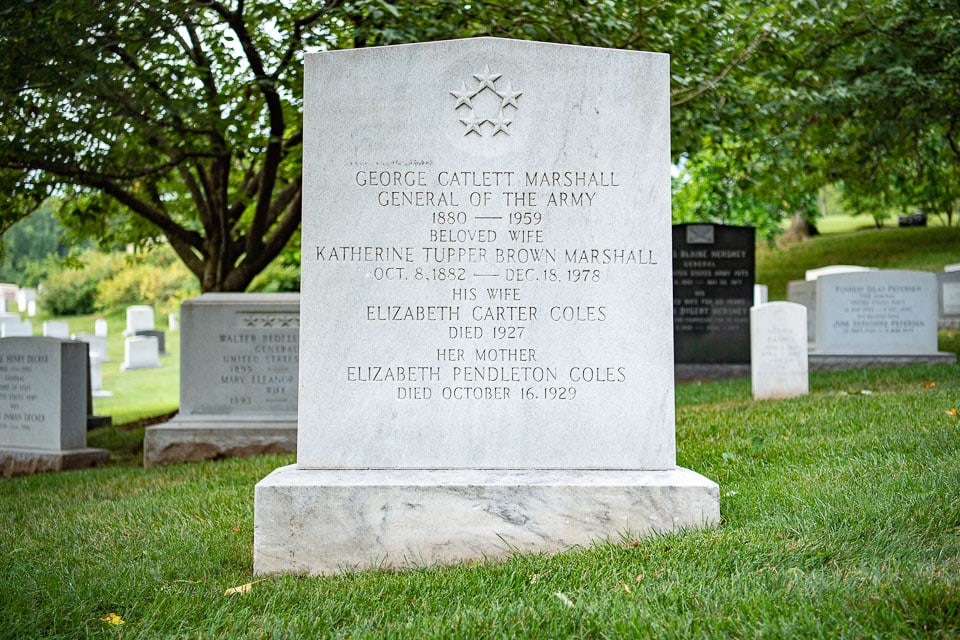
General Marshall’s marble headstone is adorned with the five-star rank on both sides. The back of his tombstone lists the positions he held.
Grave of Philip Kearny (Major General)
Section 2, Grave S-8
Philip Kearny Jr. studied cavalry tactics in France and used that experience to create a cavalry manual for the U.S. Army. Noted for his leadership during his military career, Kearny served in the Mexican-American War and the American Civil War. He is also credited with creating the first unit insignia patches used in the U.S. Army. Kearny was killed in action in the Battle of Chantilly in 1862.
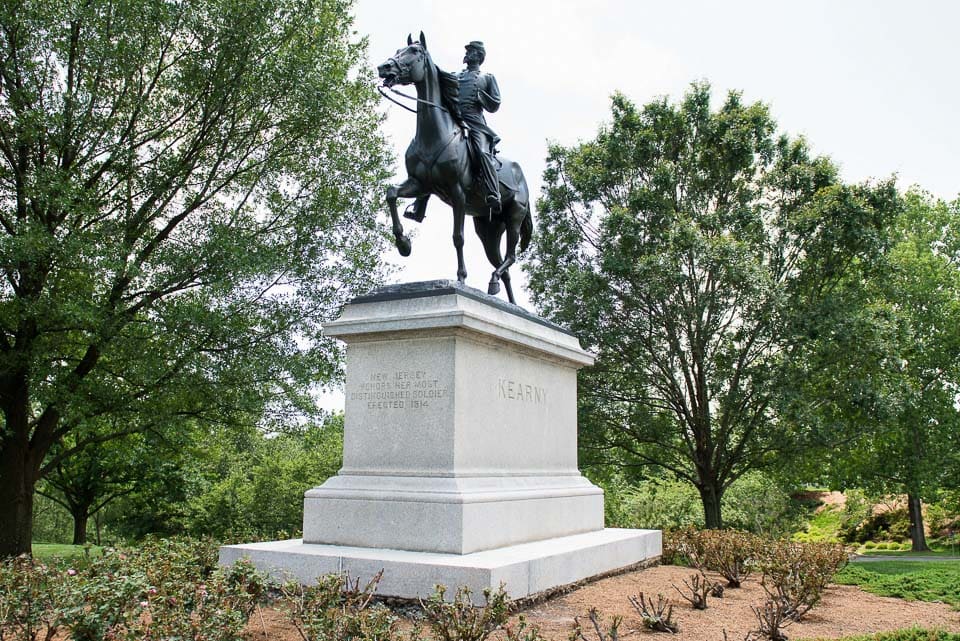
Although originally buried at Trinity Church in New York, Kearny’s remains were reinterred at Arlington in 1911 during a ceremony presided over by President Taft. His gravesite is marked with an equestrian monument commemorating Kearny’s dedication to the cavalry.
Grave of Colin L. Powell (General, Statesman)
Section 60, Grave 11917
Colin Powell was a Vietnam veteran and four star general who held many high profile positions within the U.S. Army and government. He served as national security advisor, secretary of state, and Joint Chiefs of Staff chairman, which is the highest military position in the U.S. Department of Defense. Among his many awards are the Congressional Gold Medal and two Presidential Medals of Freedom.
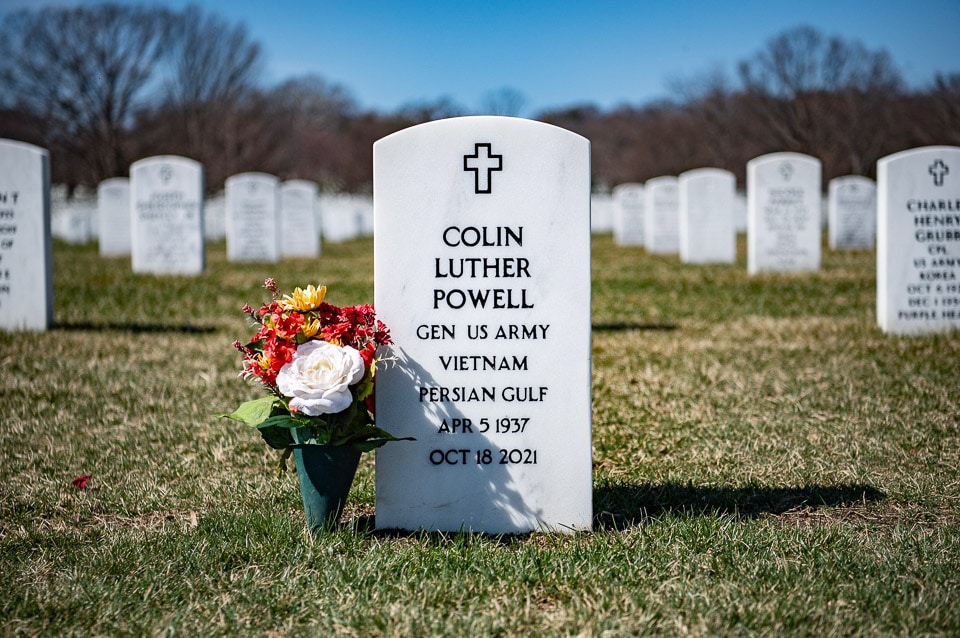
Powell’s grave is marked with a white headstone listing the wars he served in.
Grave of Abner Doubleday (Major General)
Section 1, Grave 61
Abner Doubleday was a career officer in the U.S. Army. He fought in the Mexican-American War and fired the Union’s first cannon shot at secessionist forces attacking Fort Sumter, thus beginning the Civil War. Abner was also often credited with inventing baseball, but this has been proven false.
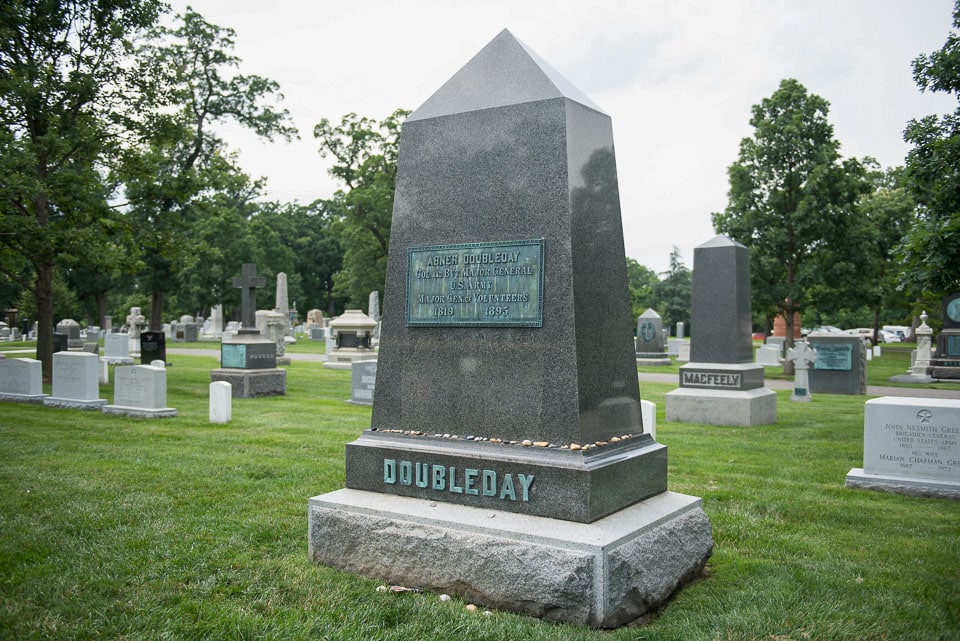
Doubledays’ grave has a large gray tombstone with a pointed top, similar to an obelisk. It has a plaque on the front and his name spelled out in letters along the base.
Grave of Audie Murphy (Lieutenant, Actor)
Section 46, Grave 366-11
Audie Murphy is one of the most decorated U.S. soldiers in history, having received 28 medals by the end of World War II, including the Medal of Honor. After the war he went on to a career in Hollywood, starring in over 40 films including To Hell and Back, which was based on his war experiences.
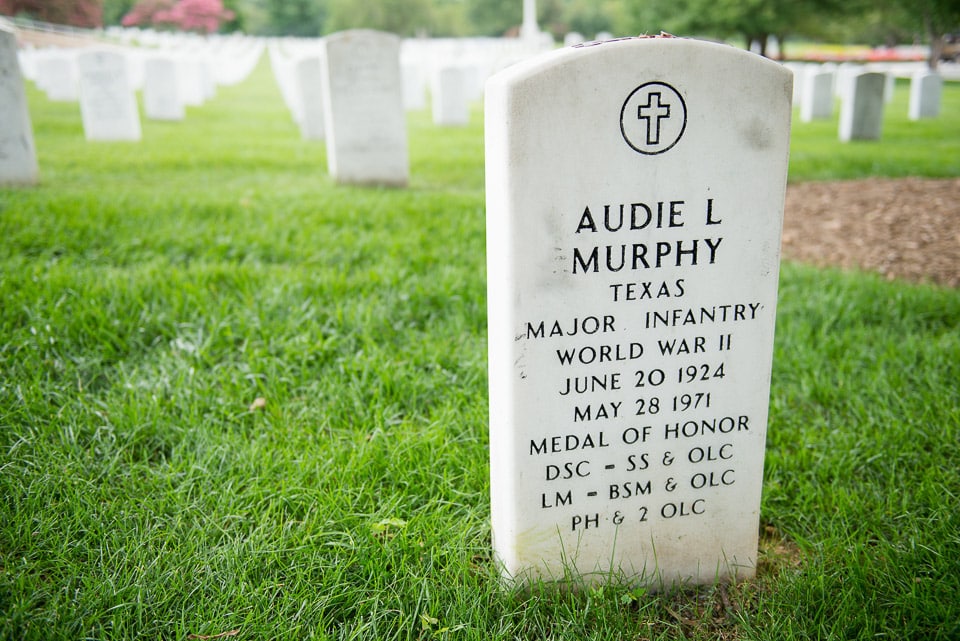
There’s a flagstone walkway leading to Audie Murphy’s grave across from the Memorial Amphitheater. As per Murphy’s request, his headstone is not decorated in gold leaf, as is customary for Medal of Honor Recipients, but is inconspicuous like the graves of ordinary soldiers. Murphy’s gravesite is believed to be the second most visited grave in Arlington National Cemetery.
Grave of Robert Edwin Peary (Rear Admiral, Explorer)
Section 8, Grave S-15
Robert Peary served in the U.S. Navy and made several Arctic expeditions during his time in the Civil Engineering Corps. In 1909 he led what was reportedly the first successful expedition to the North Pole (this was disputed). He was joined by colleague Matthew Henson, who is also buried in Arlington.
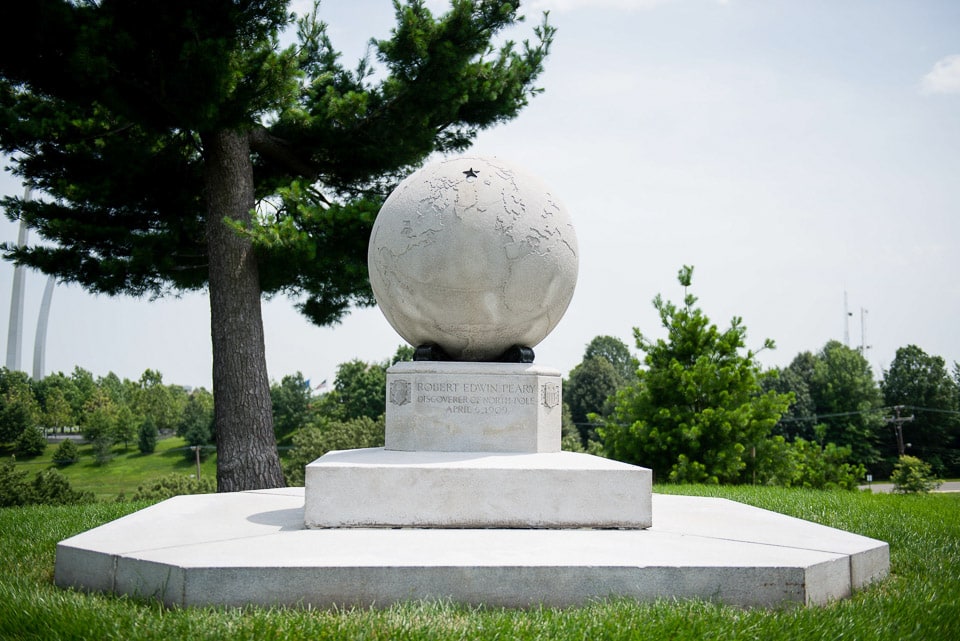
The white granite monument at Peary’s grave is adorned with a globe (a bronze star marks the North Pole) and a Latin inscription meaning “I shall find a way or make one.” The monument was unveiled by the National Geographic Society on the 13th anniversary of Peary’s claimed arrival at the North Pole.
Grave of Matthew Henson (Explorer)
Section 8, Grave S-15-1
Another explorer among the burials at Arlington National Cemetery is Matthew Henson. He conducted seven Arctic expeditions with Robert Peary, including their 1909 journey to the North Pole. Henson chronicled his experience in a book called A Negro Explorer at the North Pole. Racism originally prevented Hensen from being properly recognized for his accomplishments, but he later was awarded the Peary Polar Expedition Medal and welcomed into the prestigious Explorers Club.
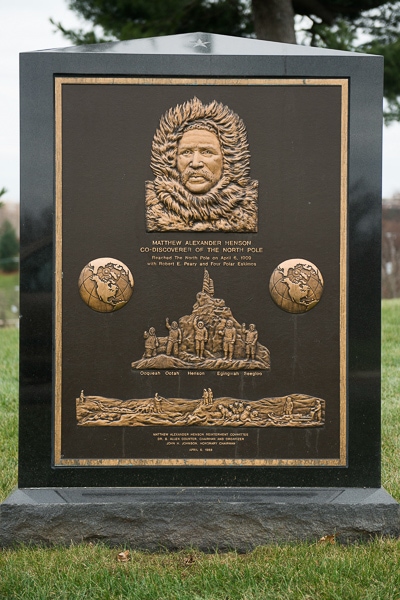
Long after Henson’s death in 1955, President Reagan granted an exception to Arlington National Cemetery’s burial policy so that Henson could be reinterred here with full military honors. Henson’s tombstone has a bas-relief bust of him dressed in a parka along with scenes commemorating his North Pole expedition. The tombstone reads “Co-discoverer of the North Pole” and has a quote from Henson’s book on the back.
Grave of Walter Reed (Major, Doctor)
Section 3, Grave 1864
Walter Reed was a physician who served in the U.S. Army Medical Corps during the Spanish-American War. His work involved studying diseases in the U.S. Army encampments, including typhoid and yellow fever. He is best known for confirming the hypothesis of Cuban doctor Carlos Finlay that yellow fever is transmitted by a specific mosquito species instead of direct contact.

Walter Reed’s grave is marked by a gray headstone with a plaque that first mentions the universities he studied and worked at and ends with, “He gave to man control over that dreadful scourge yellow fever.”
Grave of Anita Newcomb McGee (Doctor)
Section 1, Grave 526B
Anita Newcomb McGee was a doctor in the U.S. Army. During the Spanish-American War, she was the only woman to hold the position of Acting Assistant Surgeon and her role was to lead the Army’s nurses. After the war, McGee lobbied for a permanent nursing corp and later helped draft the legislation that established the Army Nurse Corp in 1901.
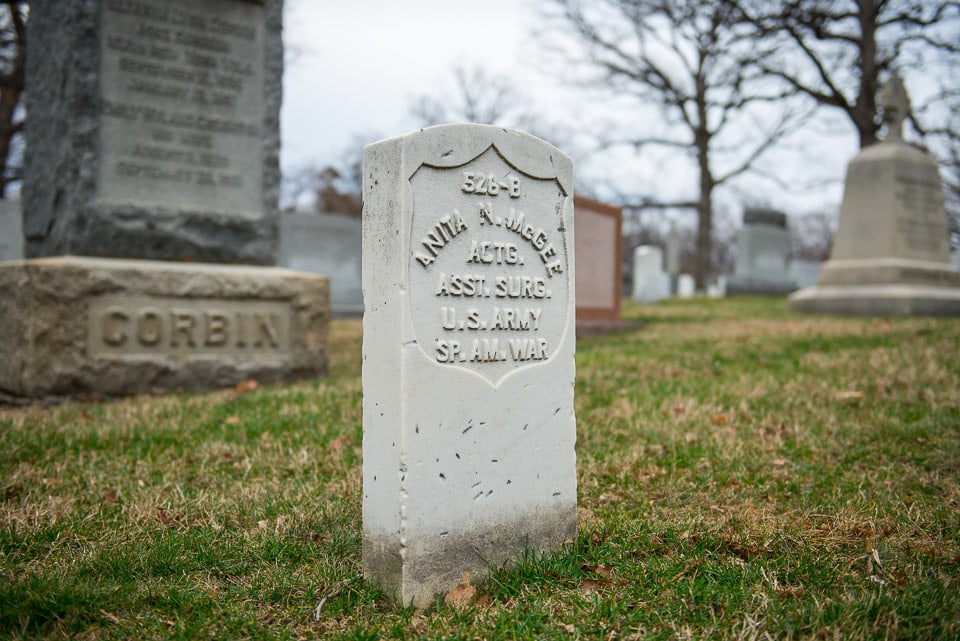
McGee’s grave has a small white headstone, but visitors can also pay respects to her at the Spanish-American War Nurses Memorial which she also advocated for.
Grave of Pierre Charles L’Enfant (Architect)
Section 2, Grave S-3
Pierre Charles L’Enfant was a prominent architect, engineer, and city planner who served in the Revolutionary War as a military engineer. He had major commissions in Philadelphia and New York and even designed the Purple Heart Medal. However, L’Enfant is best known for creating the spatial plan for Washington D.C.
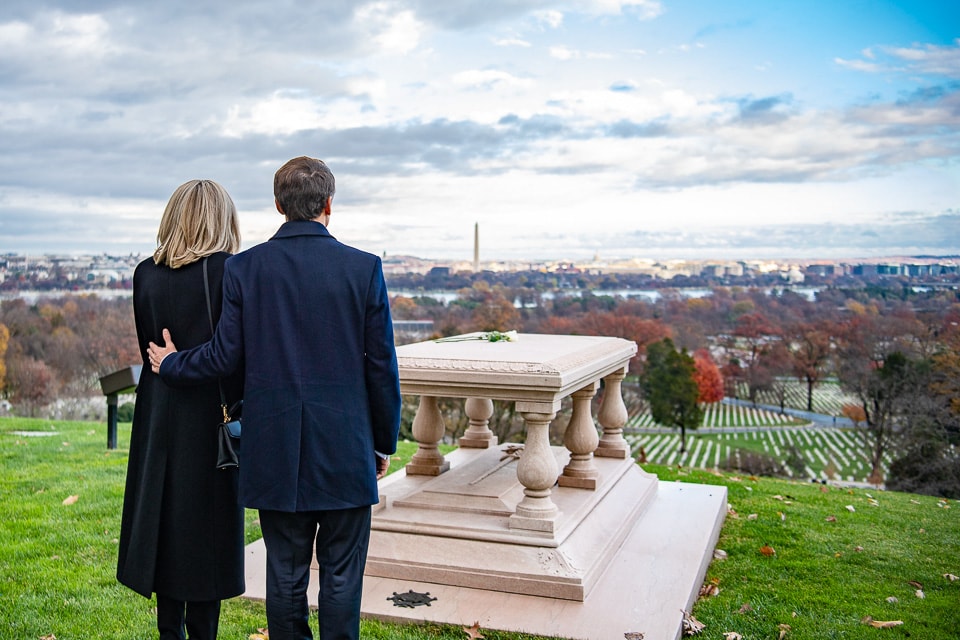
L’Enfant’s grave is located on a hill overlooking the city he designed and is marked with a tabletop tombstone made of white marble. The east end of the monument is inscribed with a depiction of L’Enfant’s plan for Washington D.C.
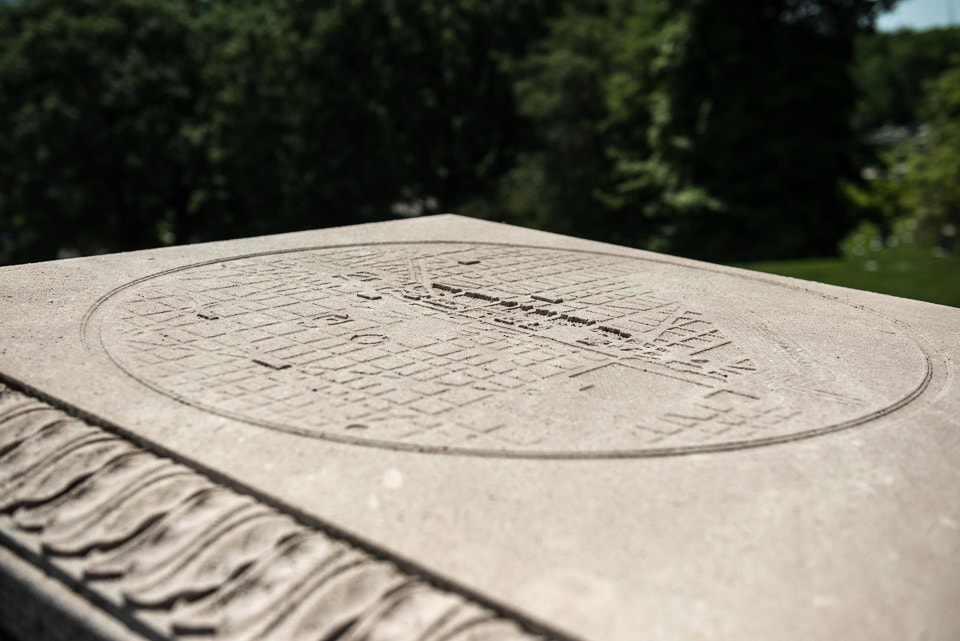
Grave of Joe Louis (Boxer)
Section 7A, Grave 177
Another one of the famous graves at Arlington National Cemetery is that of Joe Louis. Joe Louis was a boxer who held the title of “Heavyweight Champion of the World” from 1937-1949, longer than any other boxer in history. When he permanently retired from professional boxing he had a record of 66 wins and 3 losses. Louis enlisted in the Army during World War II and reached the rank of sergeant. He also fought 96 exhibition matches for troops.
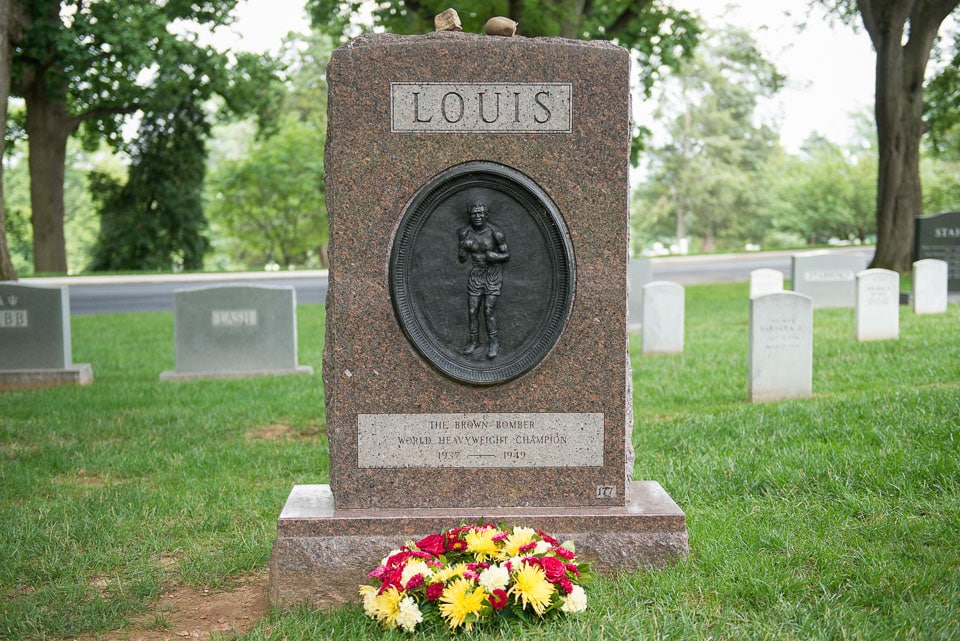
Joe Louis’ gravestone is inscribed with his nickname “The Brown Bomber” below a bas-relief image of him. Louis was able to be buried in Arlington after Ronald Reagan made an exception to the burial requirements.
Grave of the Challenger Astronauts
Section 46, Grave 1129
When the Space Shuttle Challenger exploded in 1986, just 73 seconds after takeoff, all seven crew members on board died. Their commingled cremated remains were buried beneath a memorial in Section 46 near Memorial Amphitheater.
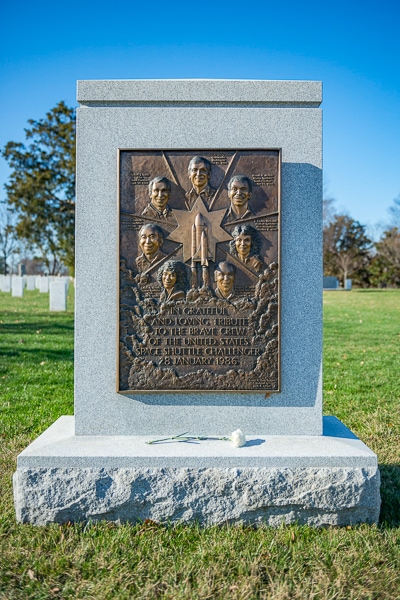
The Challenger Memorial has a bronze plaque with the astronauts’ names and faces surrounding a depiction of the space shuttle. The bottom of the plaque reads, “In grateful and loving tribute to the brave crew of Space Shuttle Challenger 28 January 1986.” The back of the memorial stone features the poem High Flight by Royal Canadian Air Force pilot John Gillespie Magee Jr.
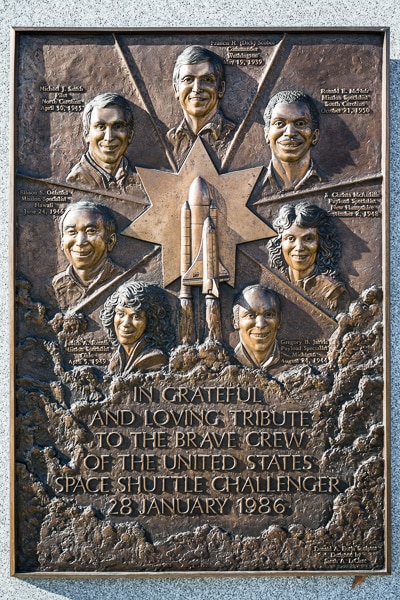
Grave of the Columbia Astronauts
Section 46
Some more astronauts among the Arlington National Cemetery burials are the crew of Space Shuttle Columbia. All seven crew members died when Columbia disintegrated as it re-entered the Earth’s atmosphere after a 16 day mission in 2003.
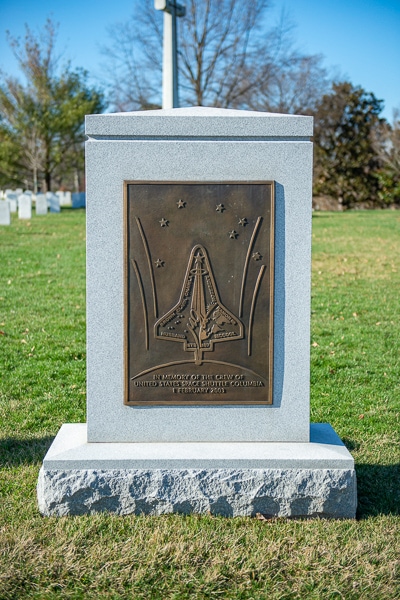
A memorial to the Columbia astronauts was erected steps away from the Challenger Memorial. The Columbia Memorial stone has a bronze plaque with the names of the astronauts inside an outline of a space shuttle. The three Columbia astronauts whose remains could be identified are buried in individual gravesites near the memorial.
More Notable Arlington National Cemetery Burials
There are so many noteworthy and famous people buried at Arlington National Cemetery that it’s impossible to list them all, but here are a few more that stand out.
John Glenn (astronaut)
- first American to orbit the earth
- third American in space
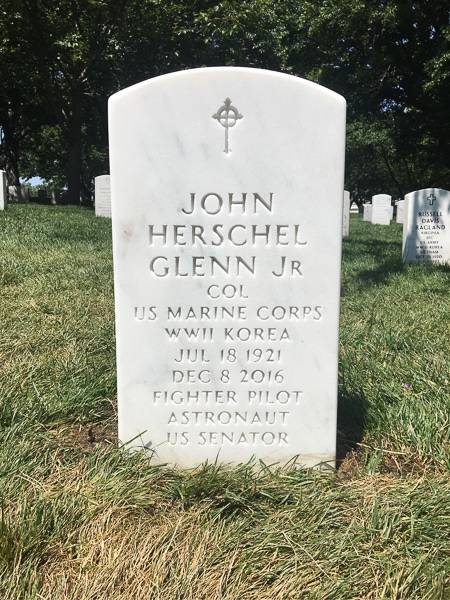
George Westinghouse (inventor, engineer)
- inventor of air brakes for locomotives
- founder of the Westinghouse Electric Corporation
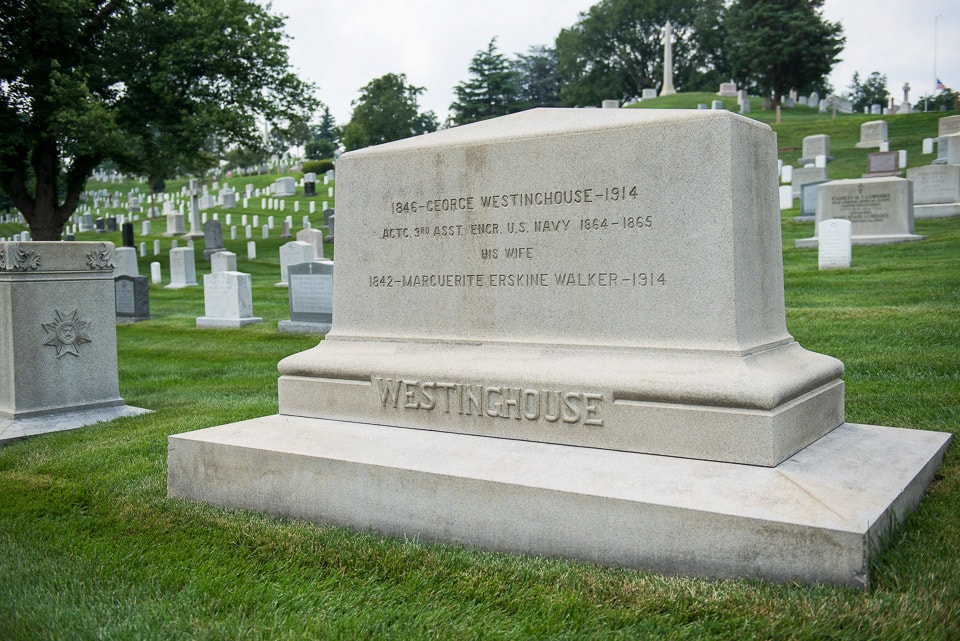
Frank Reynolds (broadcast journalist)
- former anchor of ABC’s “Evening News” and “World News Tonight”
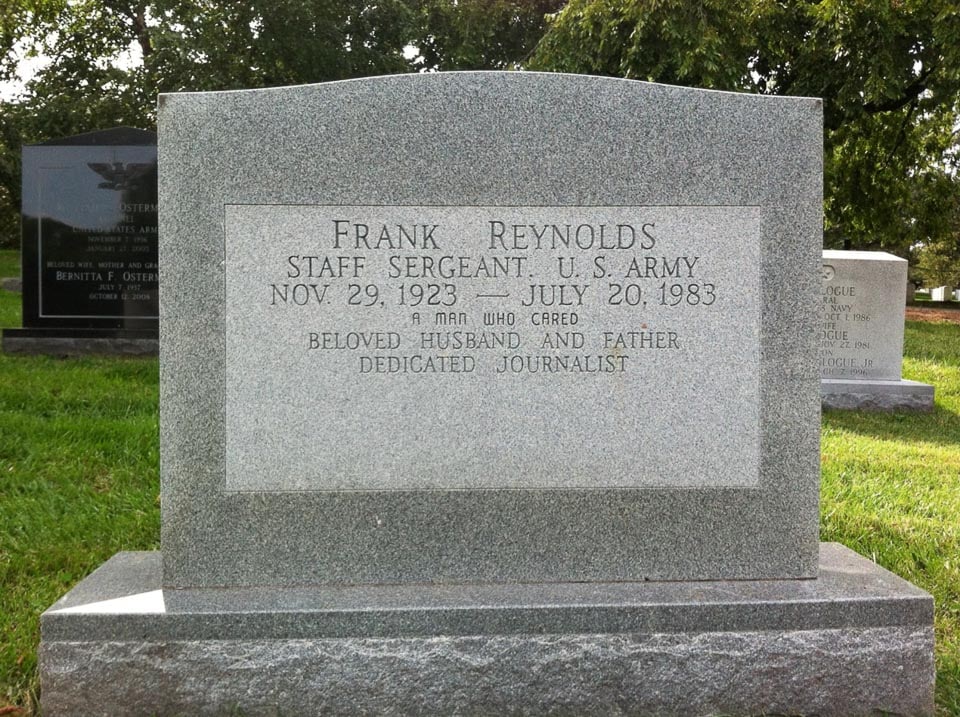
Medgar Evers (WWII veteran, civil rights activist)
- involved in efforts to end segregation and expand opportunities for African Americans
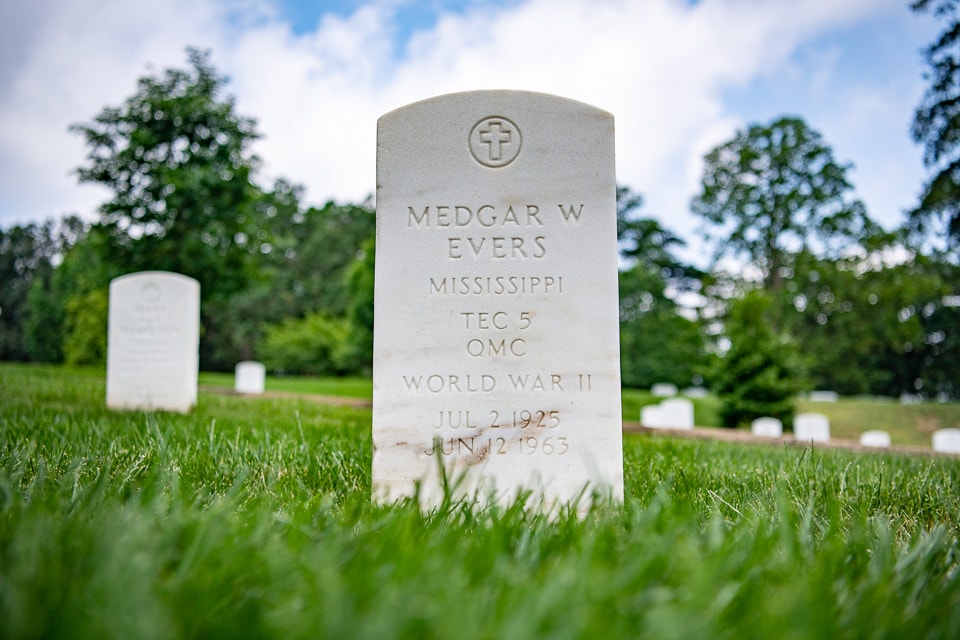
Daniel “Chappie” James Jr. (fighter pilot)
- first African American to reach the rank of four-star general in the U.S. Armed Forces
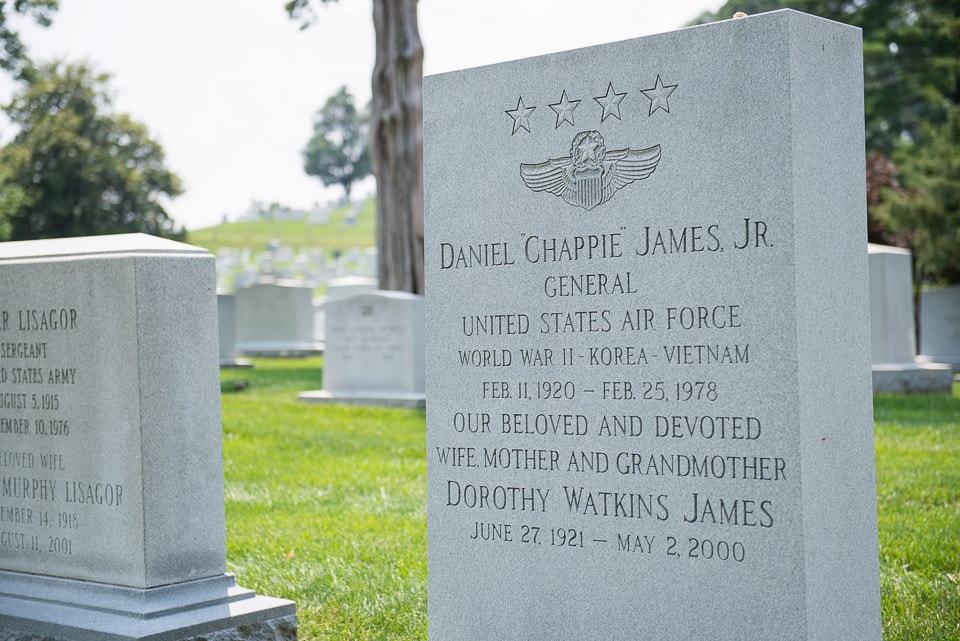
Adolphus W. Greely (Major General, explorer)
- Medal of Honor recipient
- polar explorer
- one of the founders of the National Geographic Society
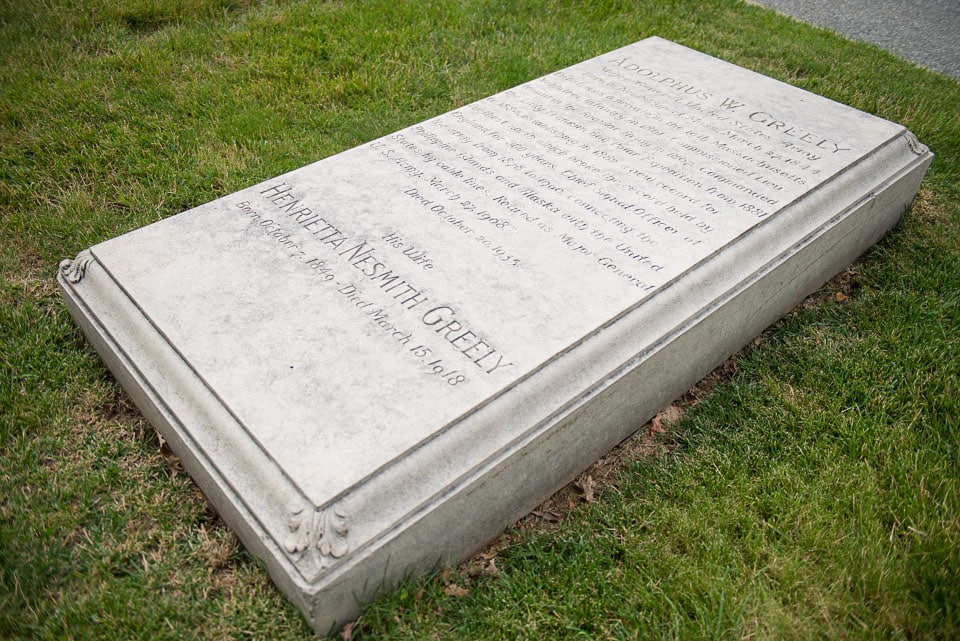
Philip H. Sheridan (General of the Army)
- served in the Civil War and led the Shenandoah Valley campaign
- received the first full military honors burial ceremony at Arlington
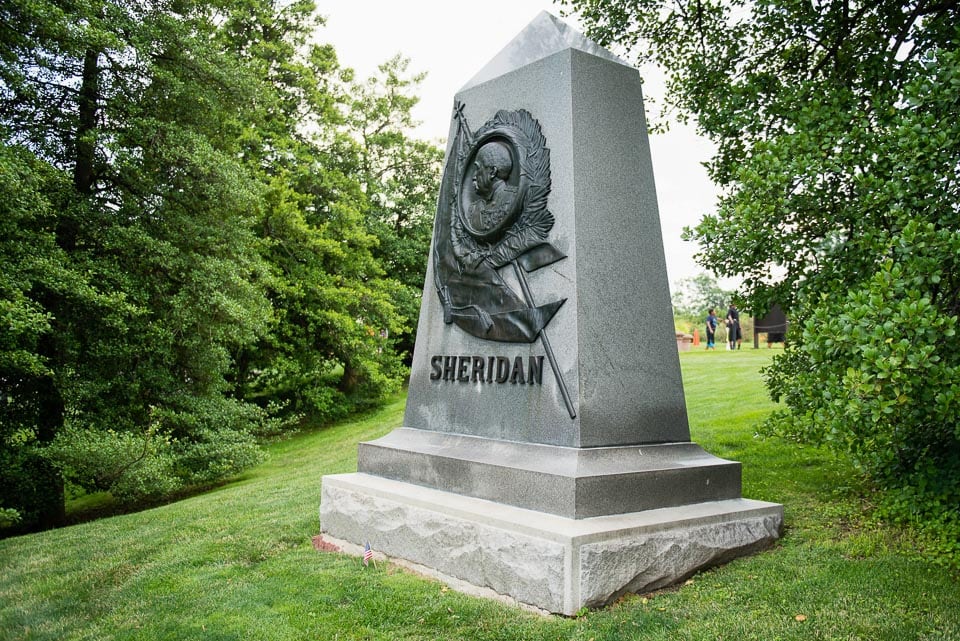
Sir John Dill (British Field Marshal)
- the highest ranking foreign military officer buried at Arlington National Cemetery
- awarded the Distinguished Service Medal for securing cooperation between American and British forces during WWII
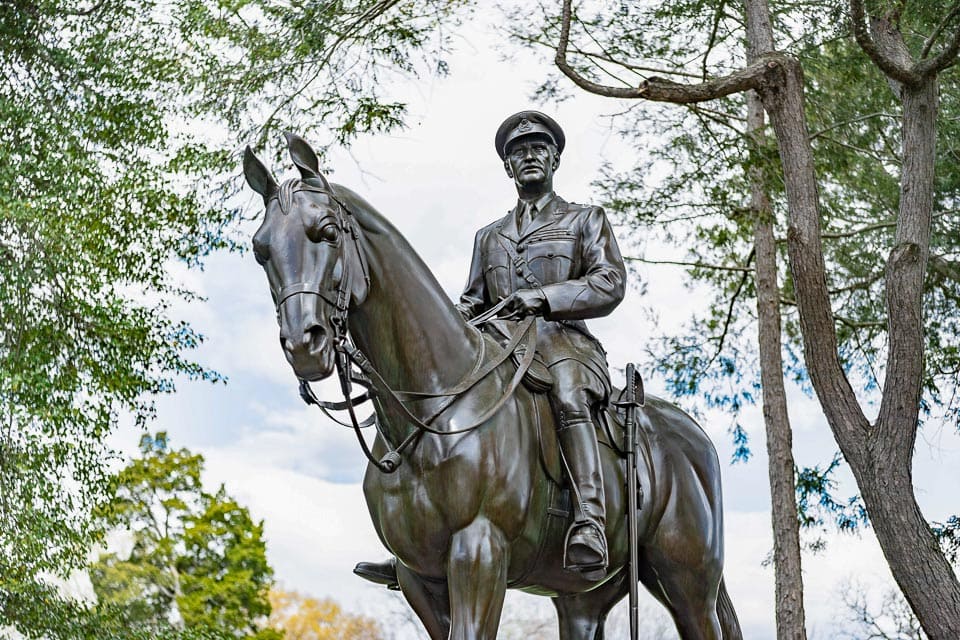
Charles Wilkes (Rear Admiral)
- commanded the U.S. Exploring Expedition which mapped large portions of the American northwest coast, the Pacific, and Antarctica
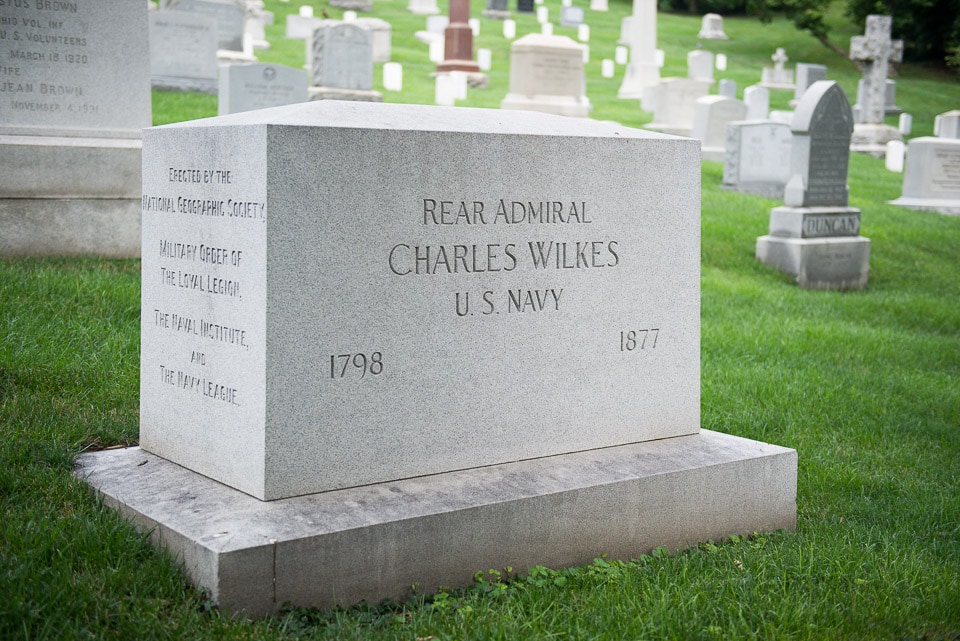
Victims of the September 11th, 2001 attack on the Pentagon
- a five-sided granite marker stands above the group burial
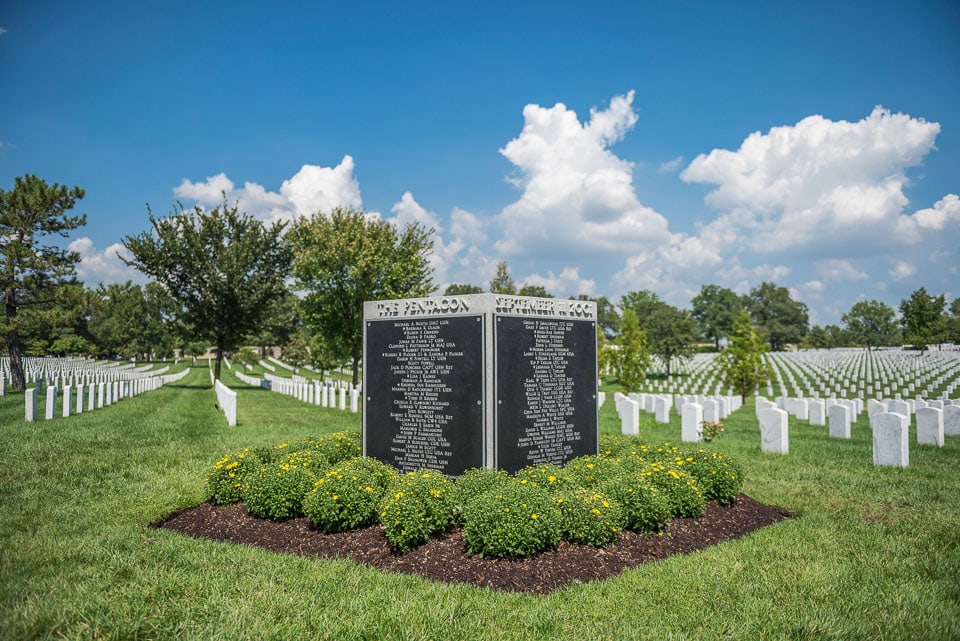
Finding Graves in Arlington National Cemetery- ANC Explorer App
To make it easier to find specific graves in Arlington National Cemetery during your visit, download the cemetery’s app “ANC Explorer”.
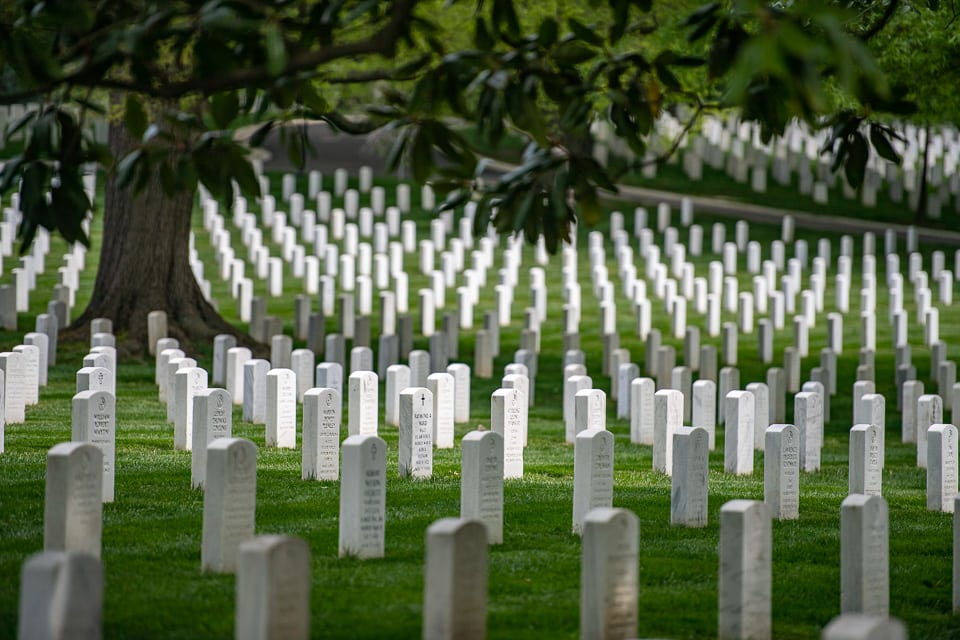
The ANC Explorer app can help you locate gravesites and other points of interest then give you directions to them. You can also view headstone photos and follow along with self-guided tours.
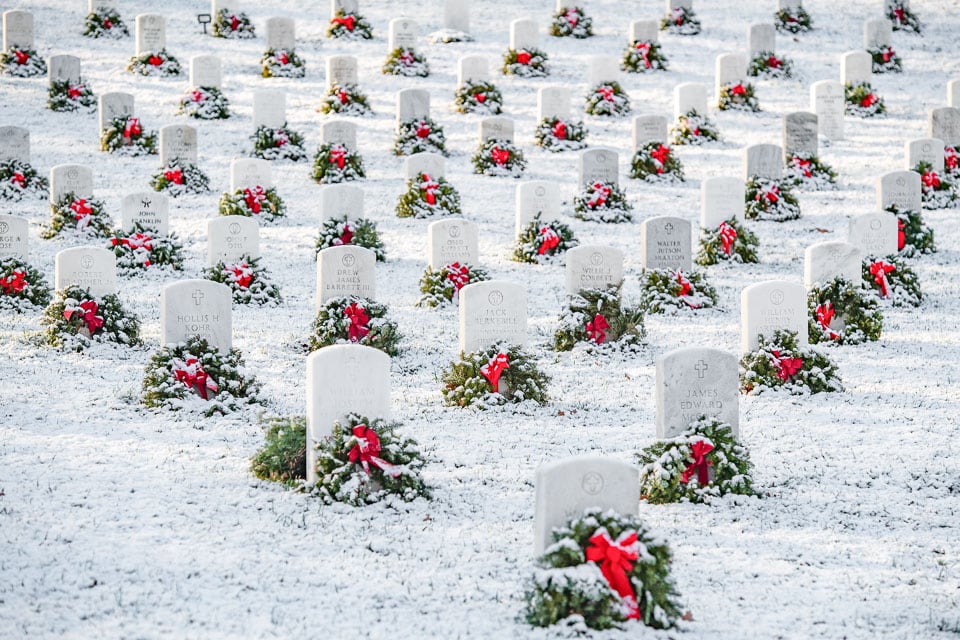
Practical Information for Visiting Graves in Arlington National Cemetery
Location: Arlington National Cemetery is located in Arlington, Virginia, across from Washington D.C. The cemetery is at the end of Memorial Avenue, on the west side of the Potomac River.
Hours: Arlington National Cemetery is open daily from 8:00 am- 5:00 pm. Confirm current hours here.
Admission Fees: None
Getting Around & Tram Tours: Visitors can explore the cemetery on foot, but at 639 acres it’s a significant walking distance. There’s also an interpretive hop-on hop-off bus tour that stops at notable sites including John F. Kennedy’s gravesite and the Tomb of the Unknown Soldier. You can buy tickets for the tram tour at the Welcome Center or online here.
- Bicycling in the cemetery is not allowed unless you have a family pass.
Rules and Etiquette: Visitors are asked to speak quietly and respect the property. Food, alcohol, and pets are not allowed.
Map: A map of Arlington National Cemetery can be downloaded here. You can also get maps at the Welcome Center.
Accommodations
If you’re planning to visit Arlington National Cemetery and need accommodations, here is a list of hotels in the Washington D.C. Metropolitan Area. Please consider booking your accommodations through the included link. It costs nothing extra and helps support this website.
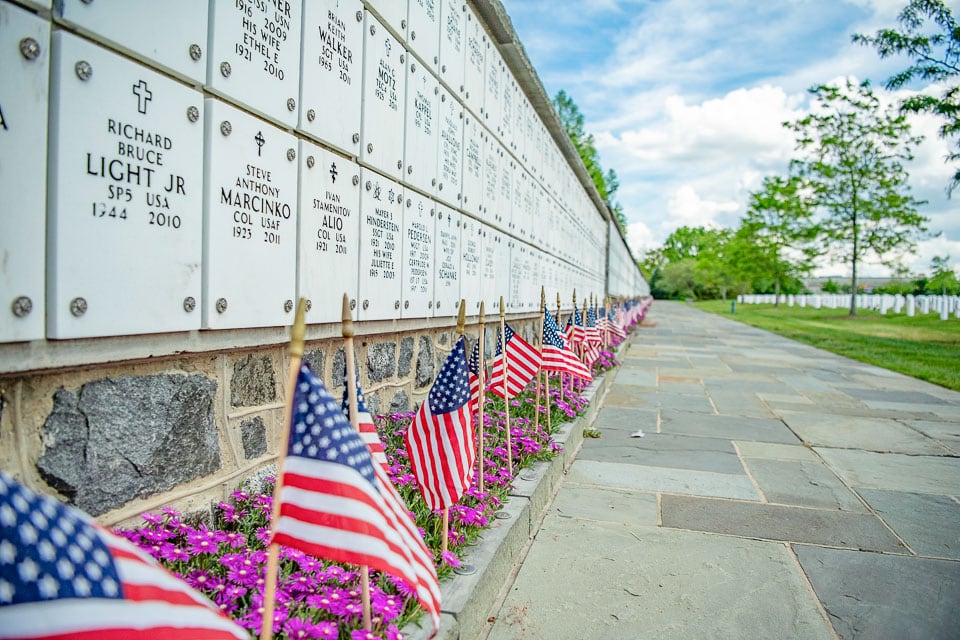
Read More About Arlington National Cemetery
- Visiting Arlington National Cemetery- A First Time Visitors Guide to Arlington National Cemetery
- Arlington National Cemetery Facts- Interesting Facts About Arlington National Cemetery
More Burial Places in the United States
- Granary Burying Ground in Boston- Burial Place of Three Founding Fathers of the U.S.A.
- Mount Auburn Cemetery- The First Rural Cemetery in the United States
- Charleston Cemeteries- Discover Historic Cemeteries in Charleston
- Magnolia Cemetery- Charleston’s Oldest Public Cemetery
